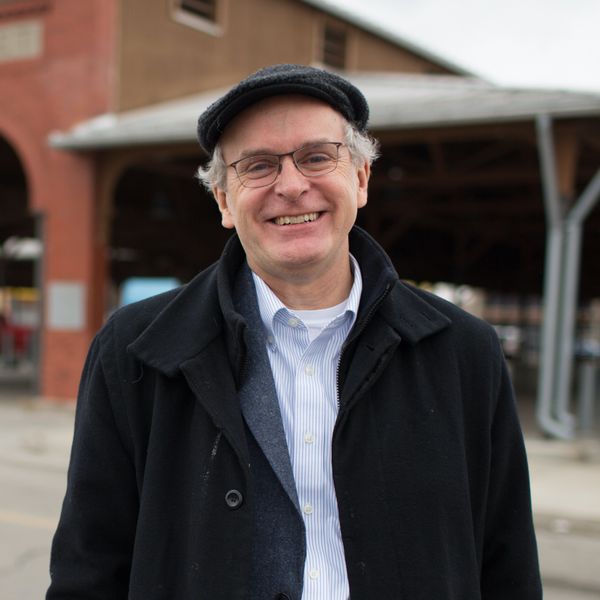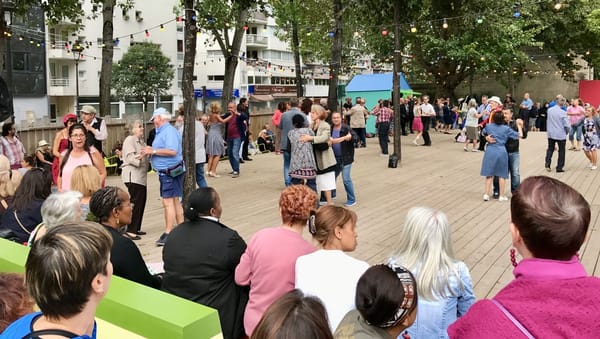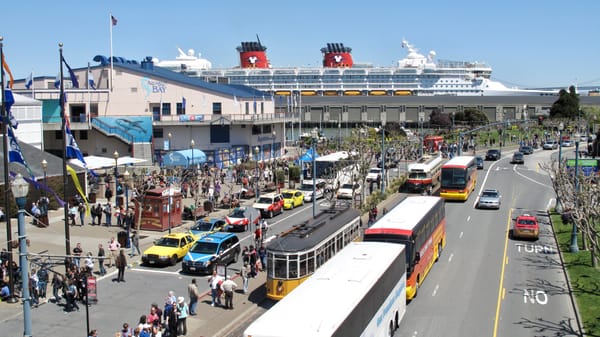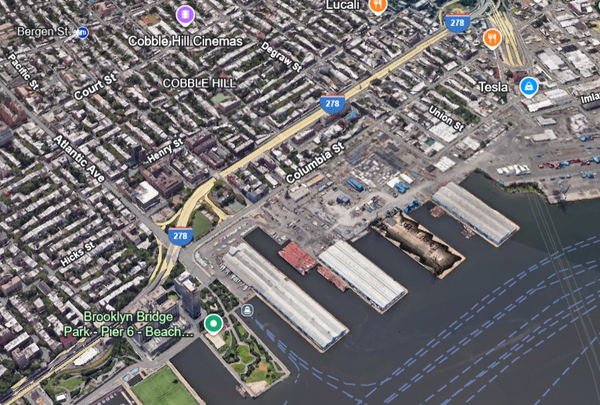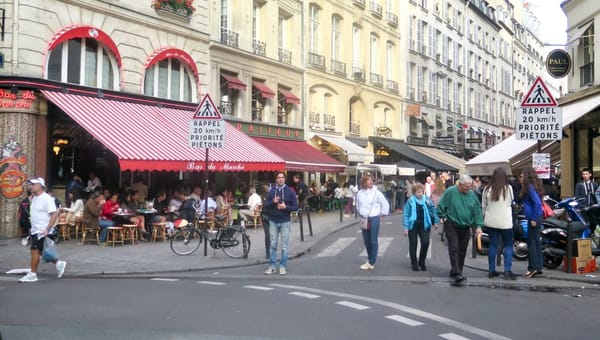Markets are inextricably connected to the social and economic life of cities in virtually every culture around the world. We treasure a great market full of people enjoying the numerous pleasures of being there, and we've found that there is a science to understanding how these markets act as engines for local economies and hubs of social activity.
Three Small Cities Where they have made a Big Impact
Markets play a unique role in animating city squares and other public spaces and, in return, benefit economically from this vitality. It is the powerful, mutually beneficial connection between market and square that we explore in this article, looking at three new markets in the U.S. that have opened in the past decade. These markets are located in very different cities, representing different contexts from a small city to a dense urban neighborhood: NewBo City Market in Cedar Rapids, Iowa; Corona Plaza in Queens, New York; and Flint Farmers' Market in Flint Flint, Michigan. What these places have in common is their bustling economic activity, both as marketplaces and vibrant squares. They are redefining what a market can mean to a community, as an economic engine and as a destination for social life.
Historical Roots
Throughout history, cities have evolved naturally around central places for trade and community life. Public markets and public squares are often conceived of and operated as separate, unrelated places, but they are more powerful when they work together – acting as a city's heart and soul.
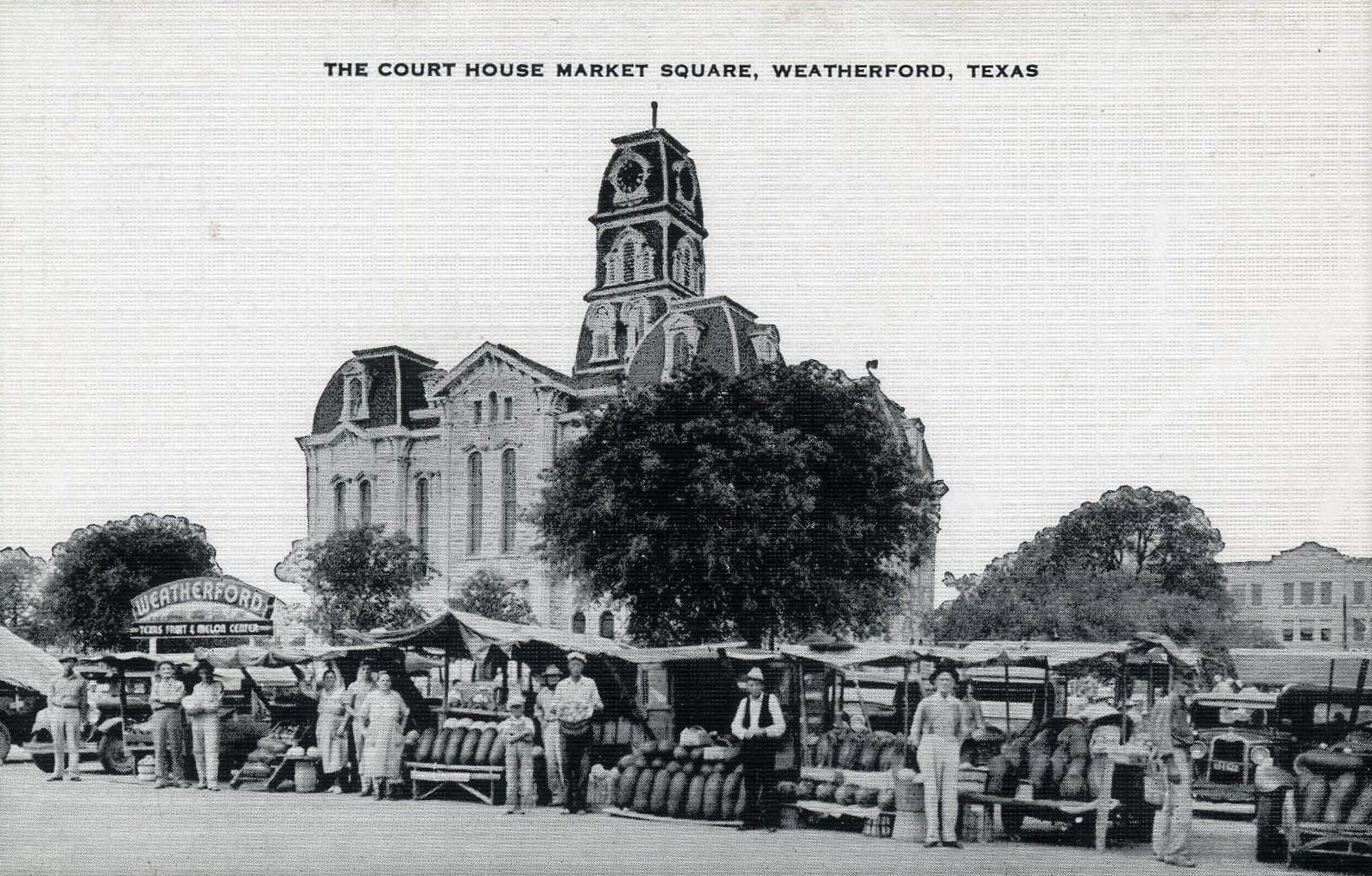
Court House Market Square in Weatherford, Texas. (credit: David K. O'Neil Public Market Collection)
Since markets were the starting point, the square where the marketplace was located became the natural first core of the city. Indeed, the Greeks called their ancient marketplace the "agora," which literally means "gathering place" – a physical location where the city's cultural, commercial, social, spiritual, and political life came together. "Agoras" continued to emerge later in other forms — as the great cathedral squares of medieval Europe and countless others around the world. They were places where markets and civic life thrived and, in many cases, continue to thrive. Today, places like the Viktualienmarkt in Munich, Germany show the versatility and staying power of such markets.
Viktualienmarkt, Munich Germany
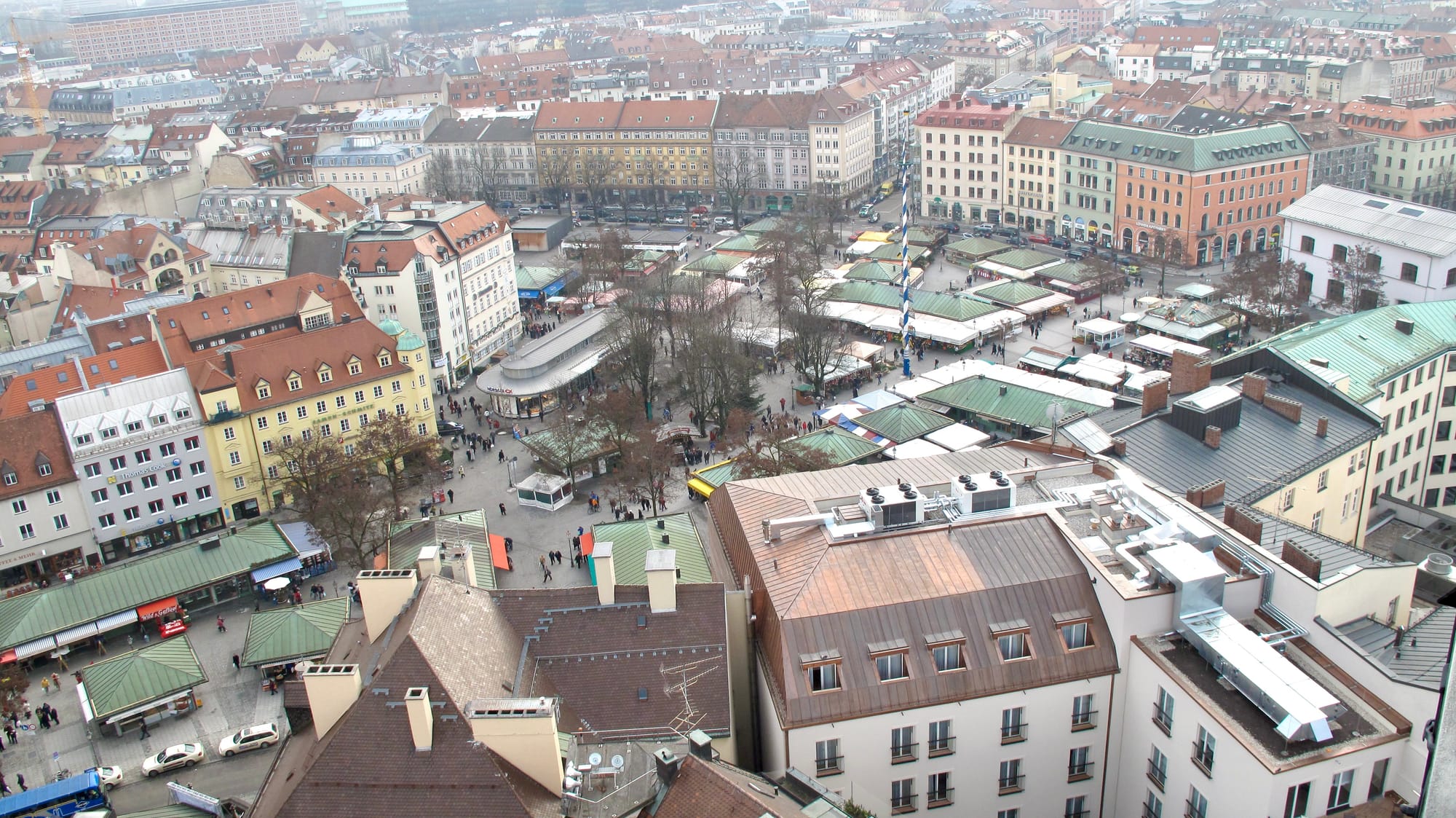
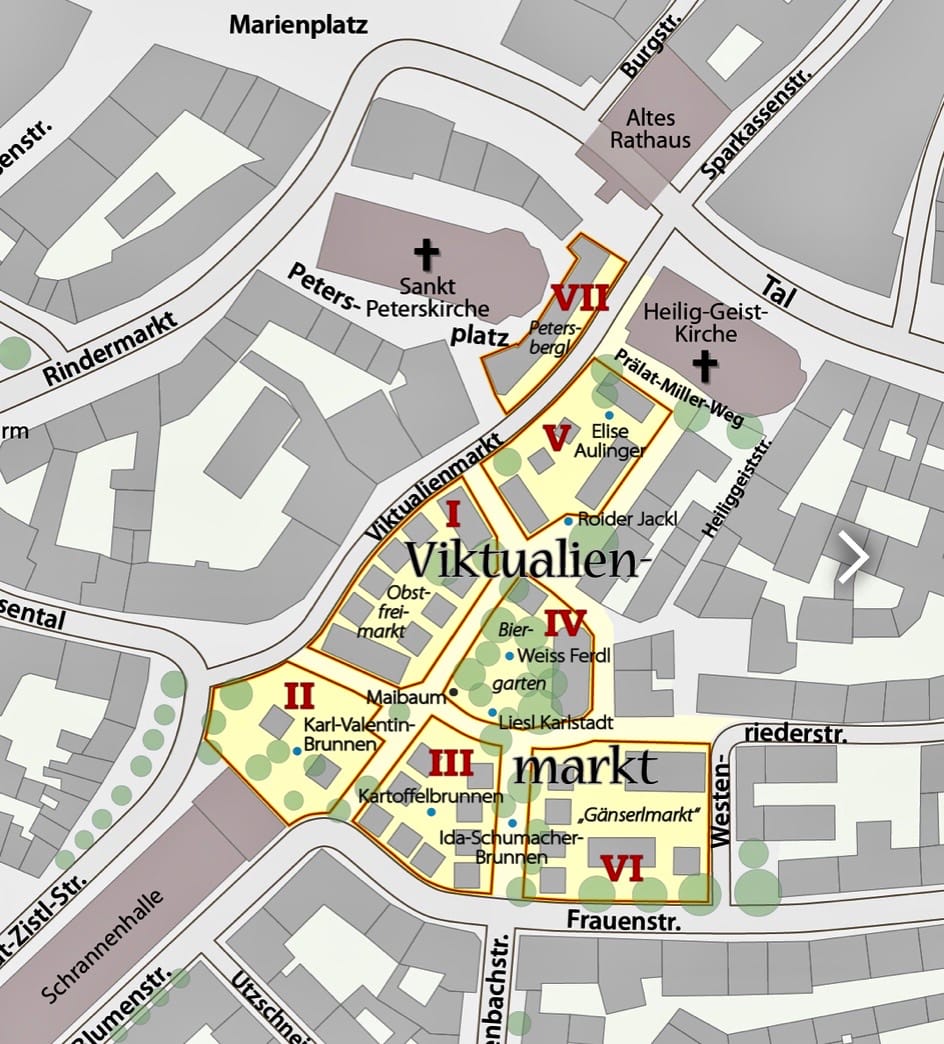
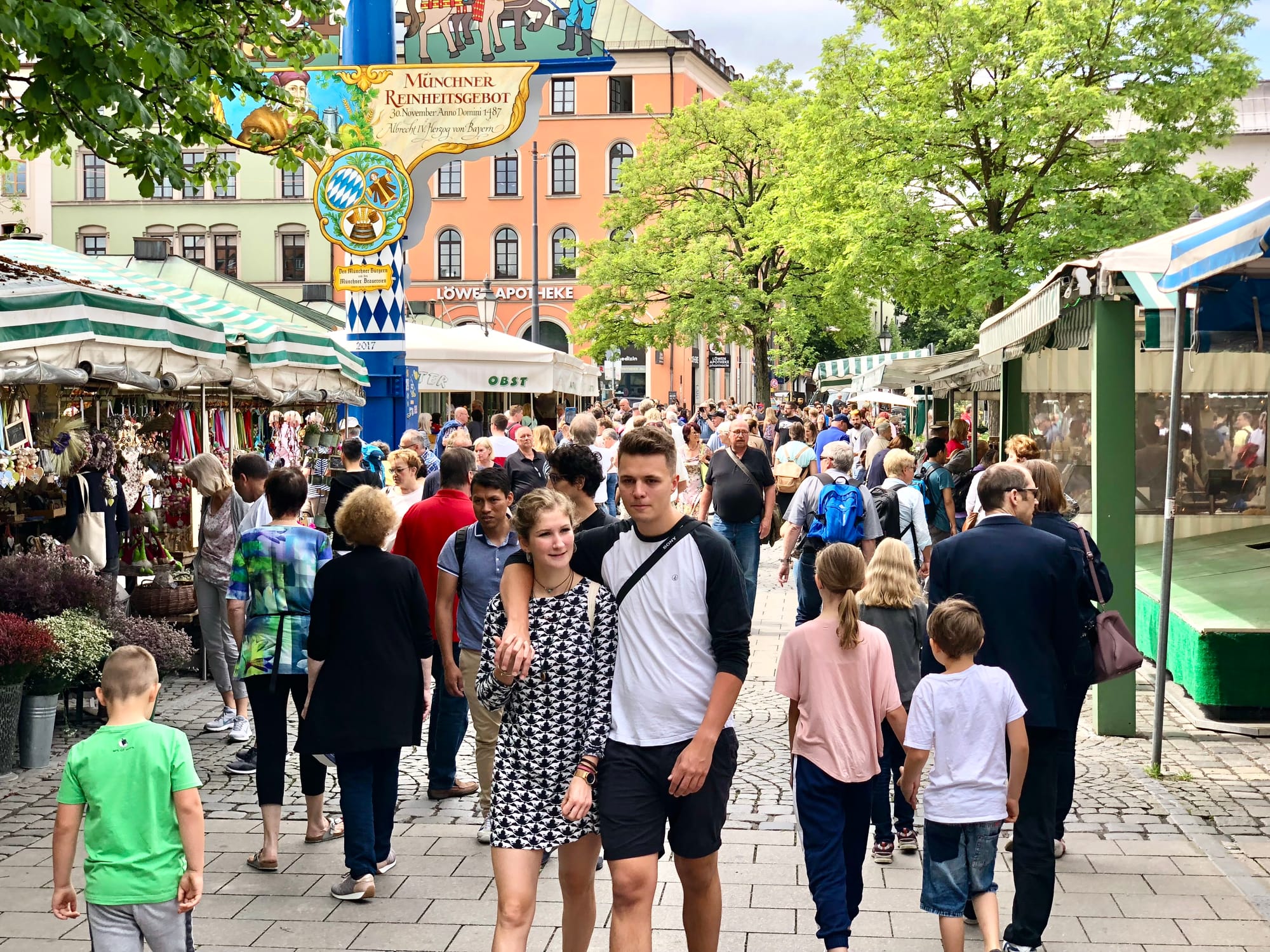
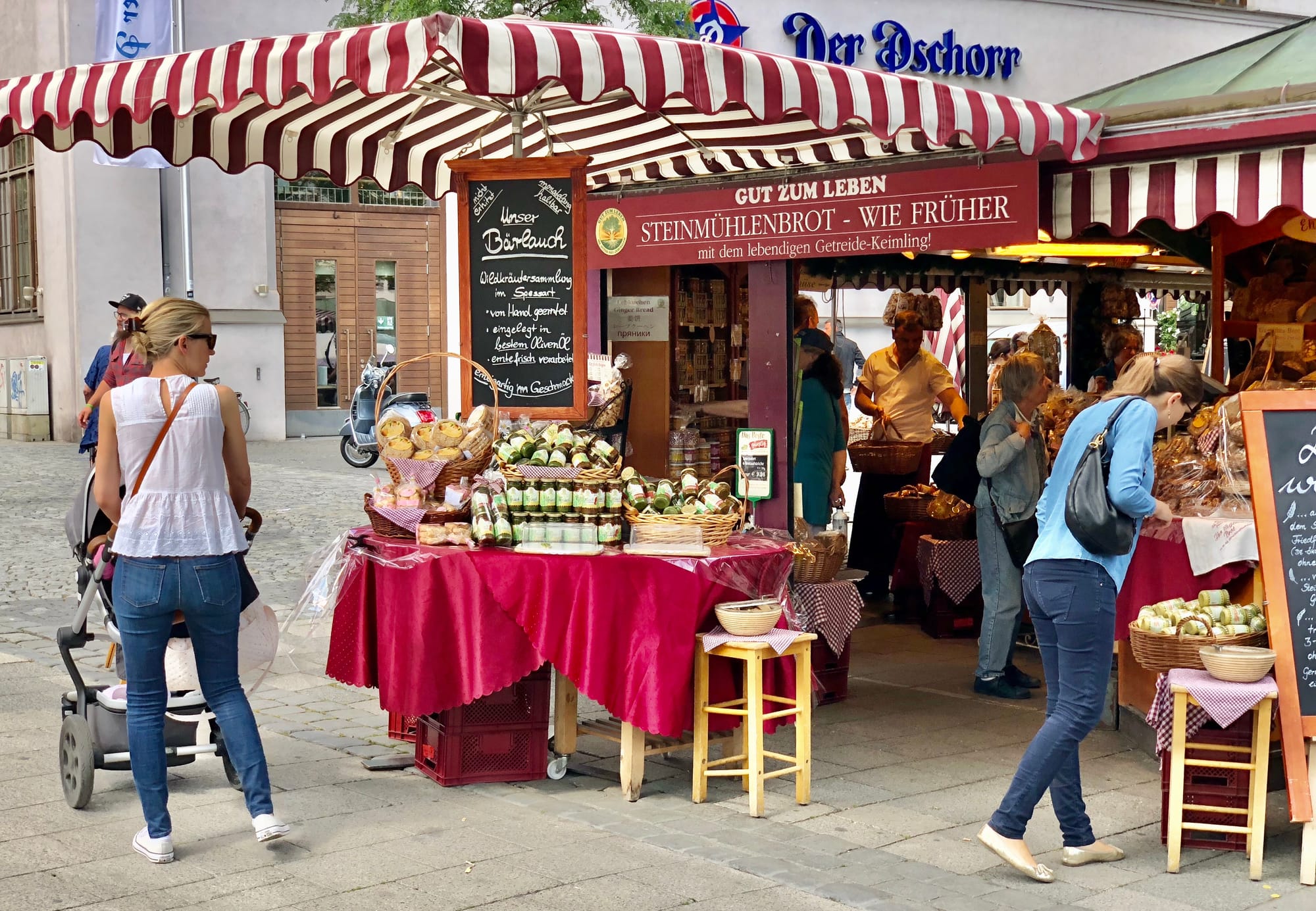
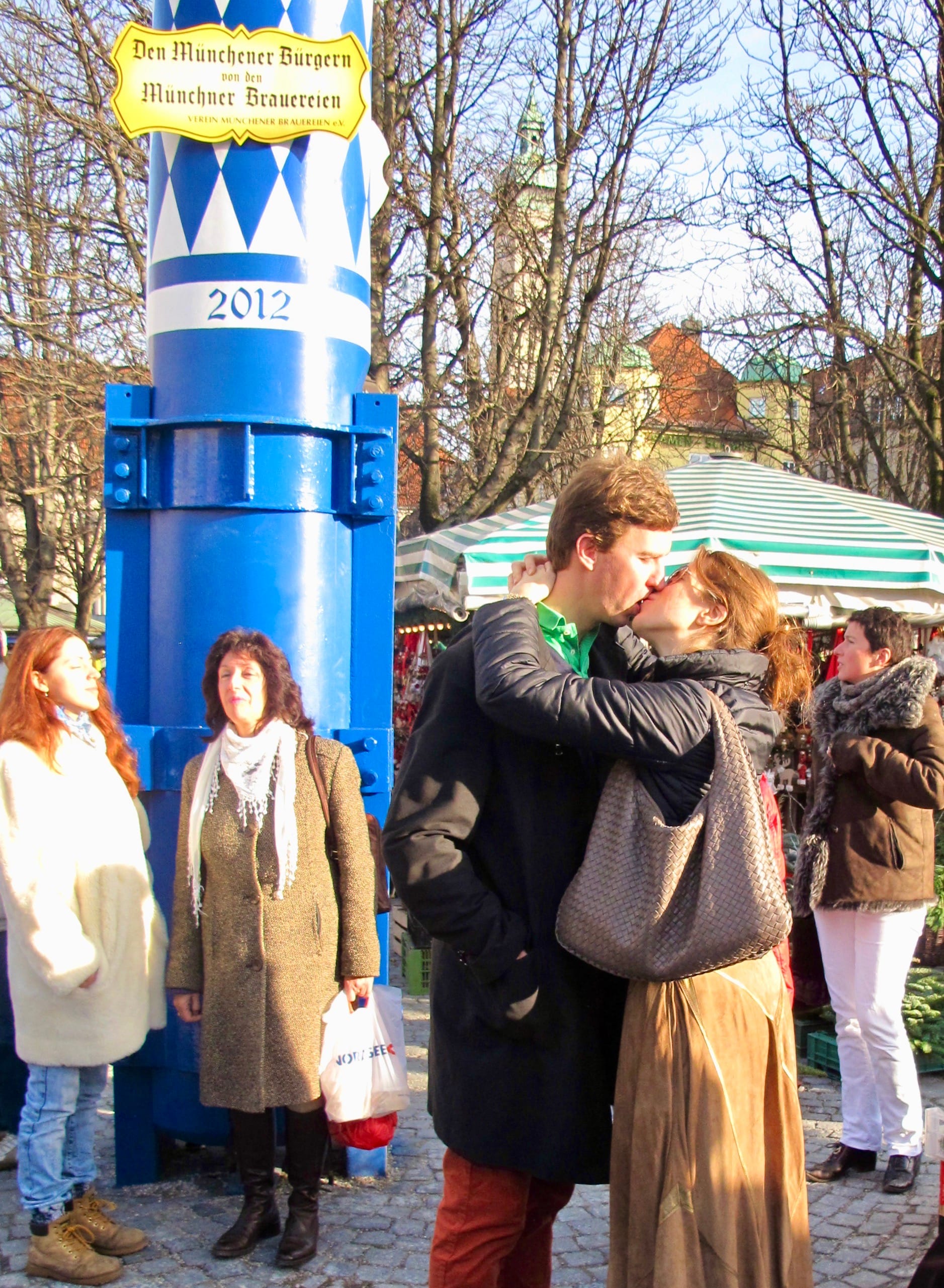
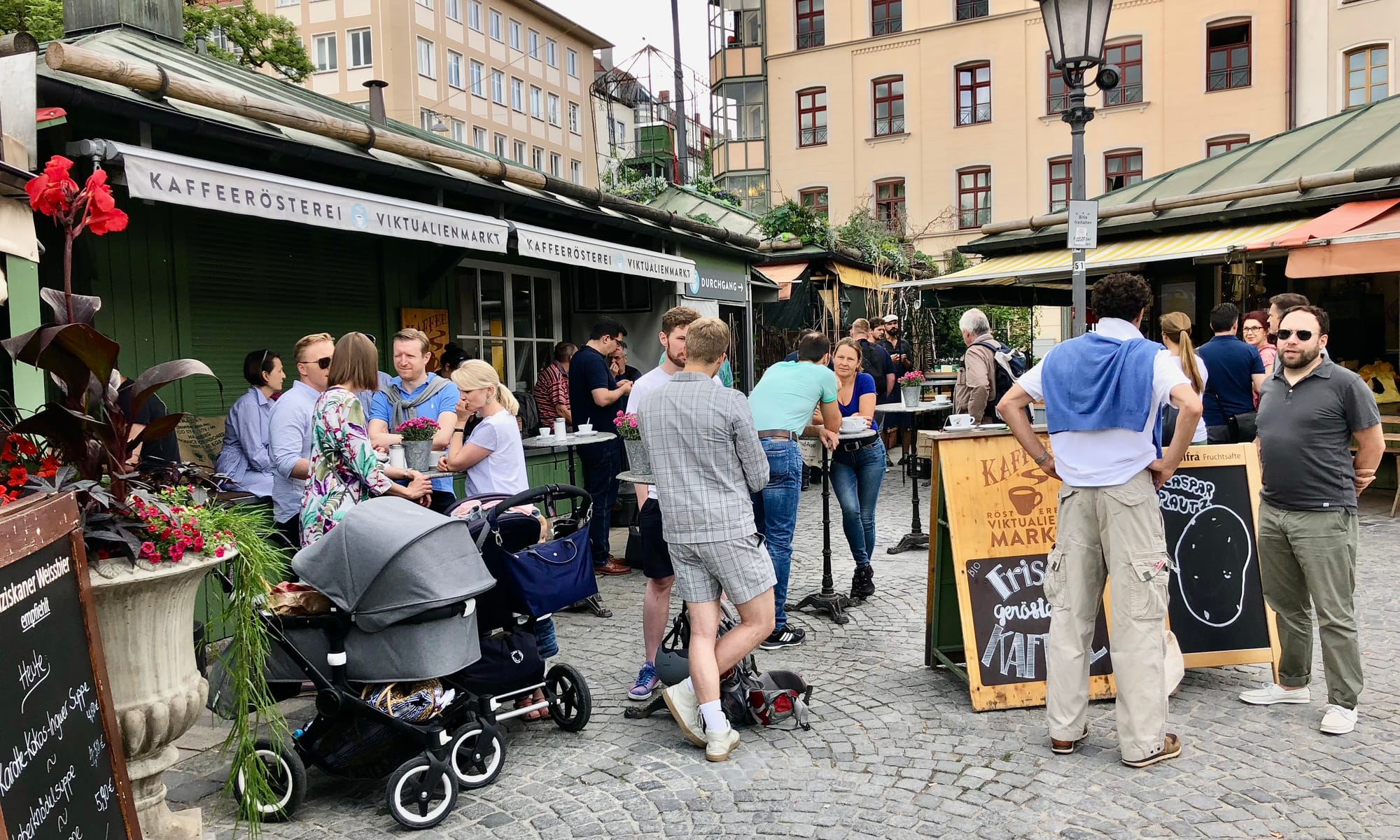
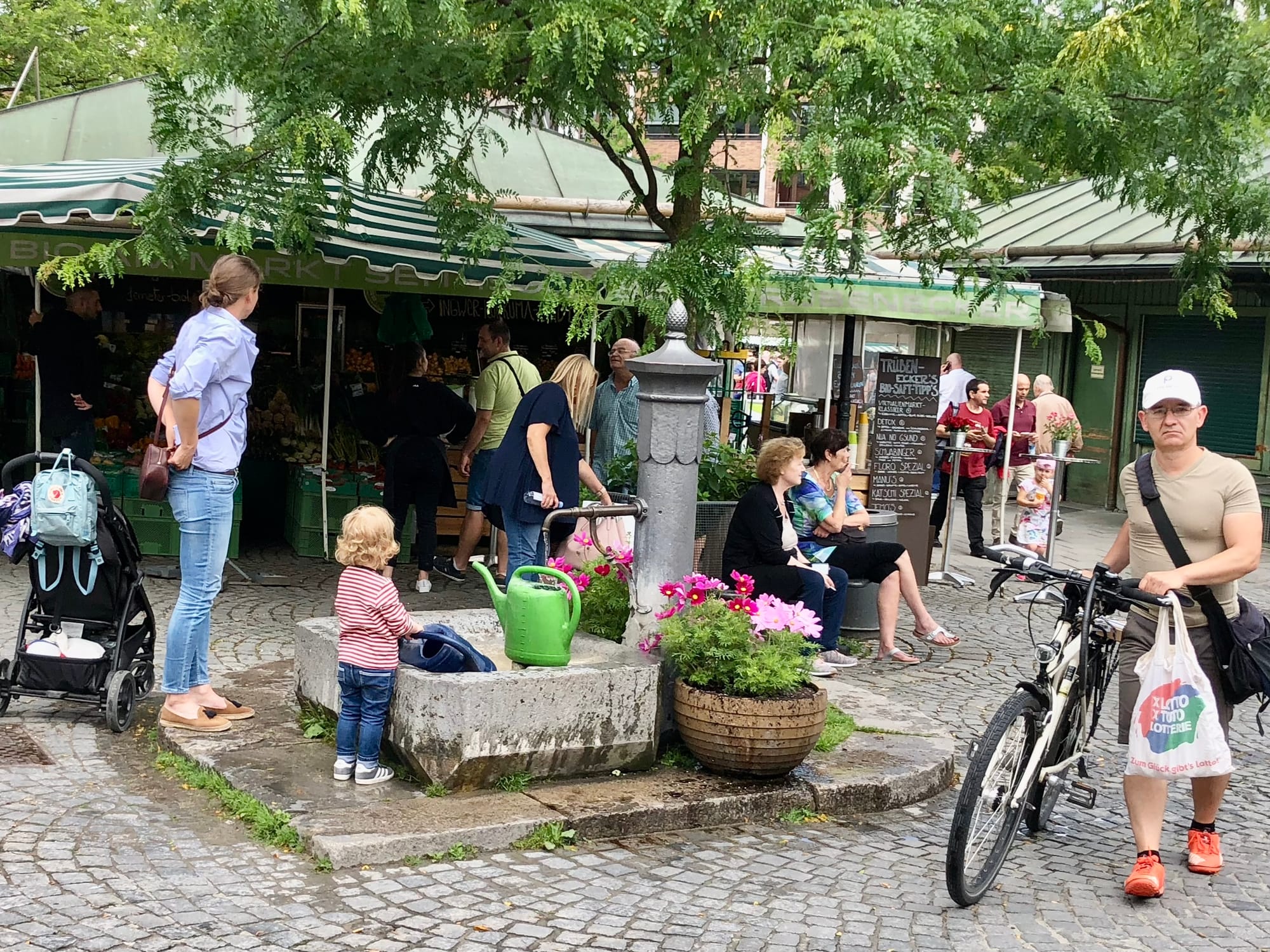
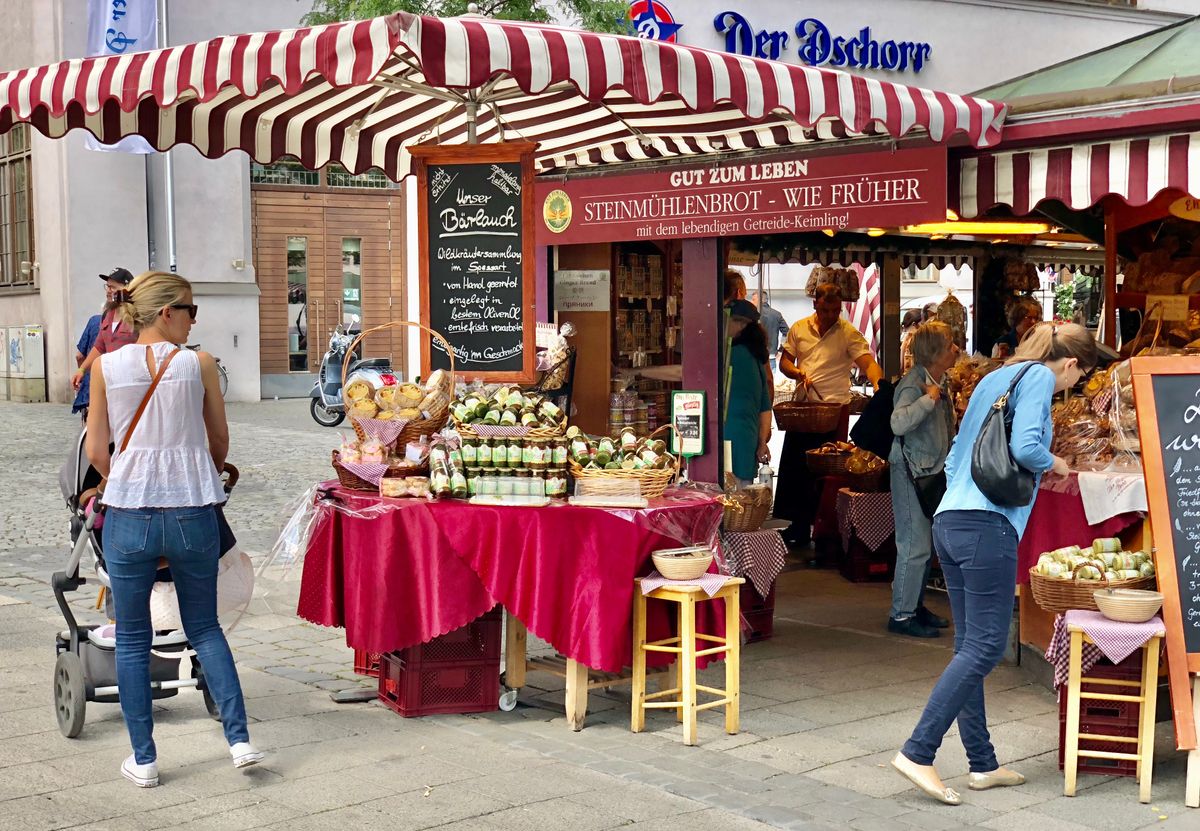
How Markets Support Local Economies and Social Life
Markets come in a wide variety of forms – from simple open-air markets with little physical infrastructure, to more fully developed markets inside buildings or other structures, to entire districts of markets in cities. It is this inherent flexibility of form that makes them so adaptable to different contexts.
The flexibility and light nature of open-air markets means they are especially adaptive to demand and supply and to the changing circumstances in which they find themselves, making the market a resilient commercial hub and a great asset to a square. The market is like an intelligent living thing that can respond to changing needs as they arise, organizing itself to maximize productivity, efficiency and sales.
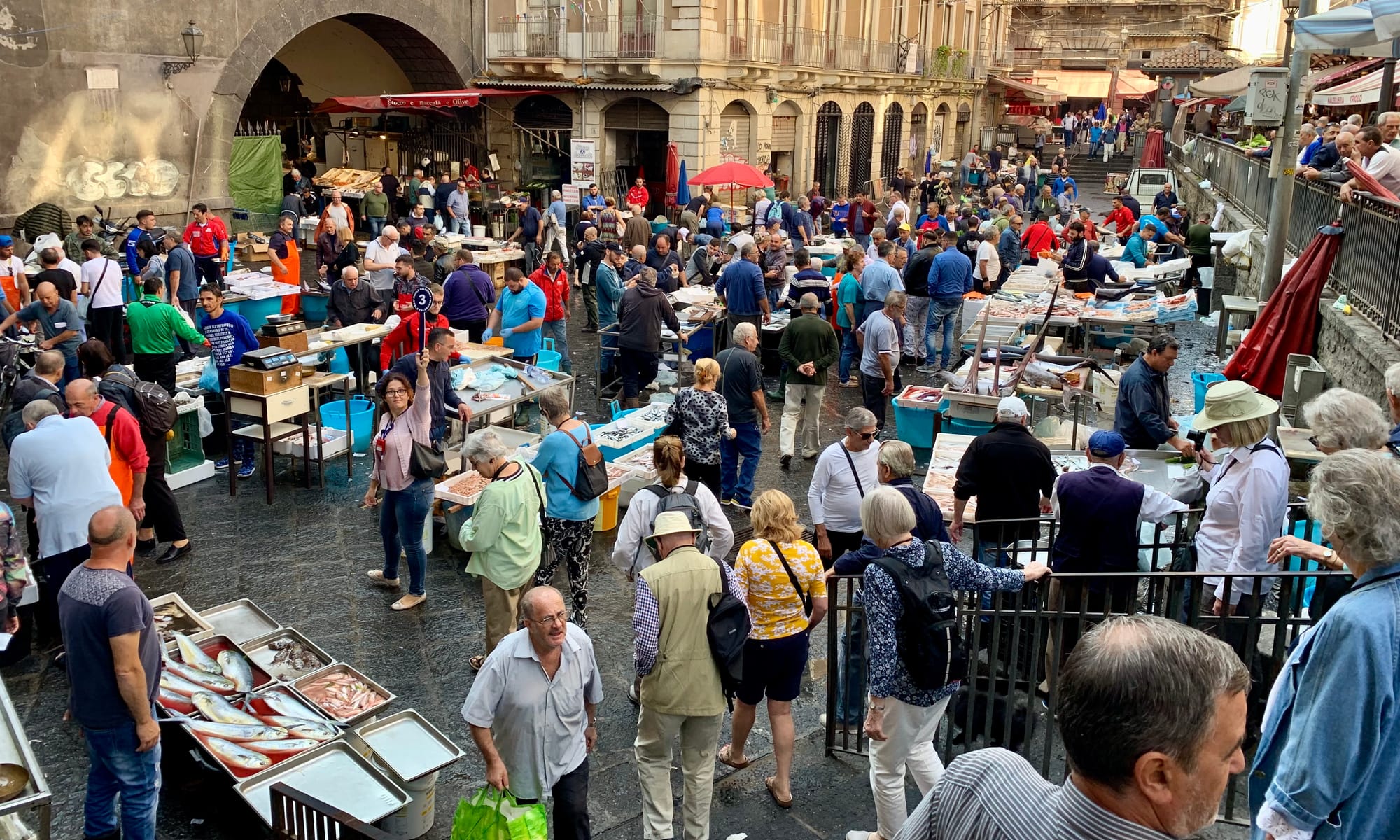
Catania, Italy Fish Market
Markets offer small businesses the perfect conditions to grow. With markets, small entrepreneurs have an affordable way to set up shop and test the success of their wares with local buyers before having to invest in setting up something more permanent.
The bustling activity and mass of different vendors selling a great diversity of products is an important reason why people of all kinds shop at a market. There's something for everyone. And the transactions between buyer and seller are often social and friendly.
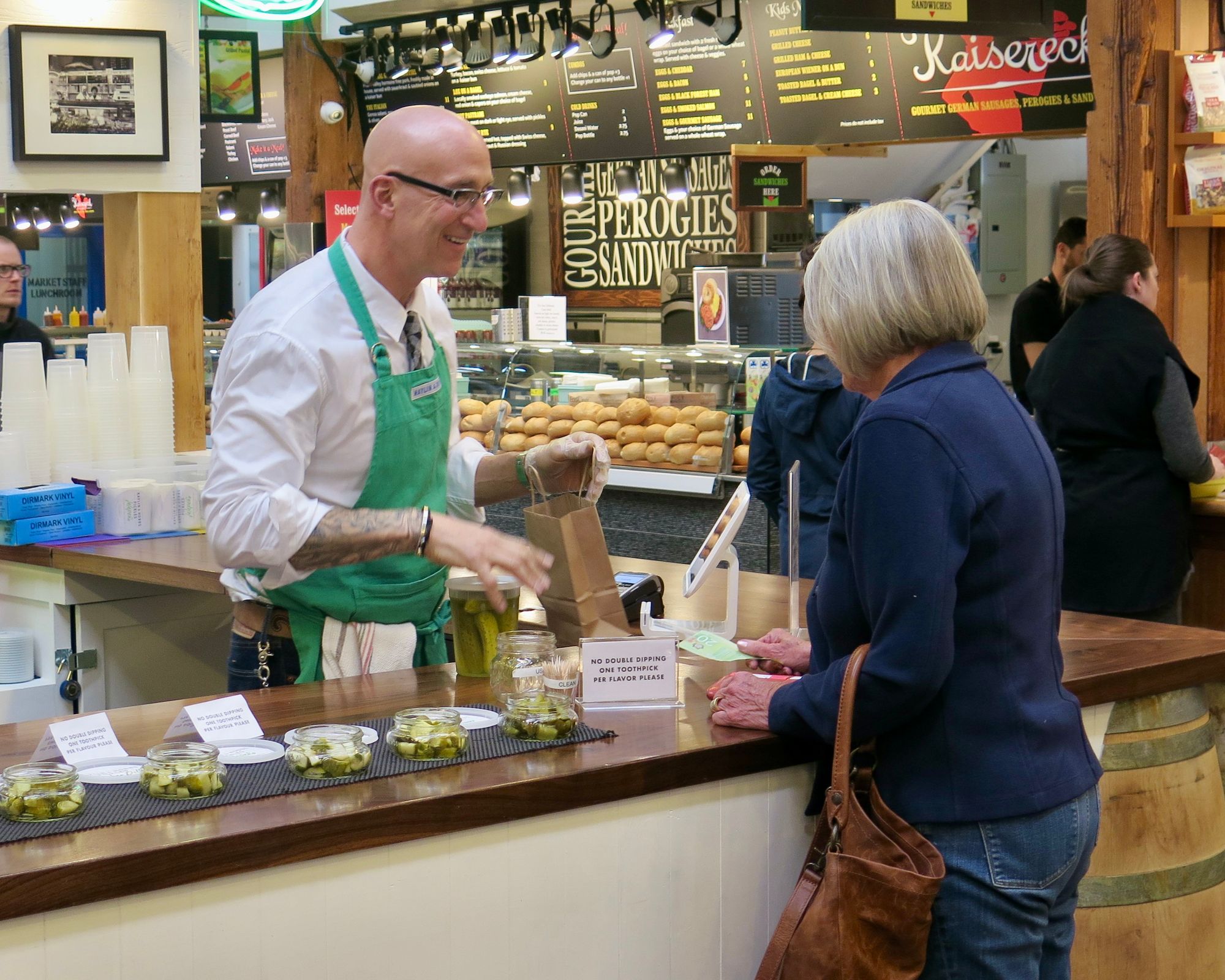
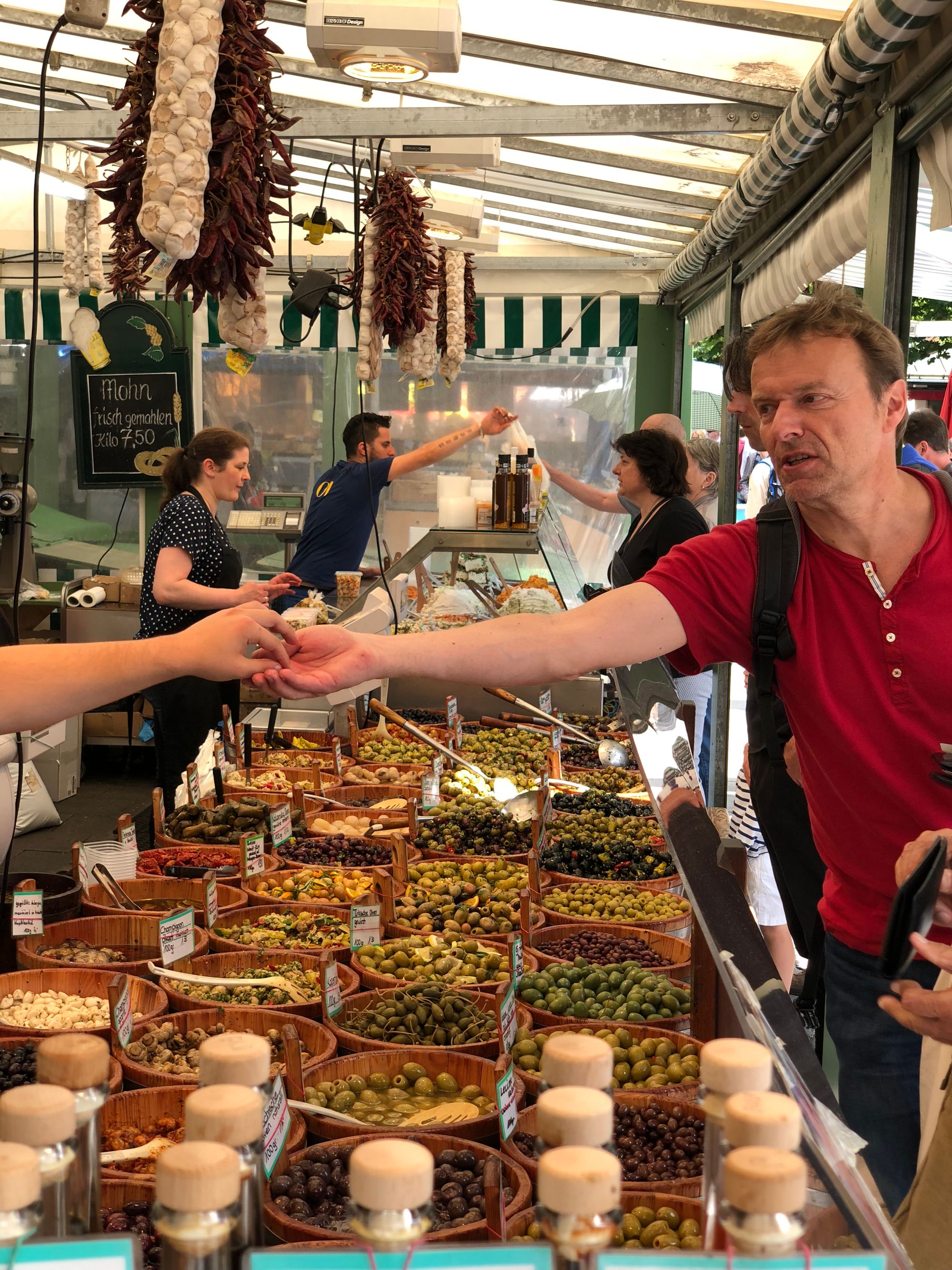
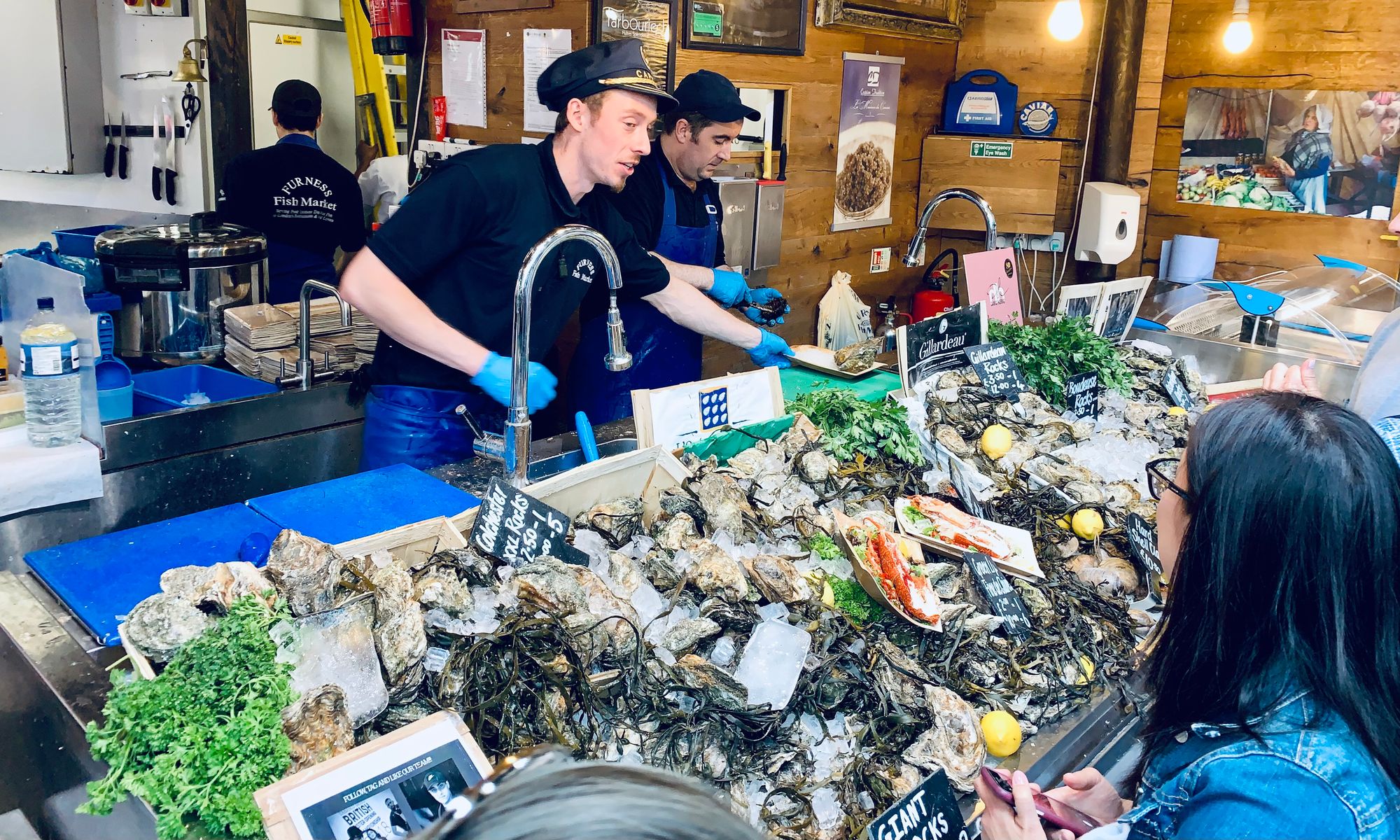
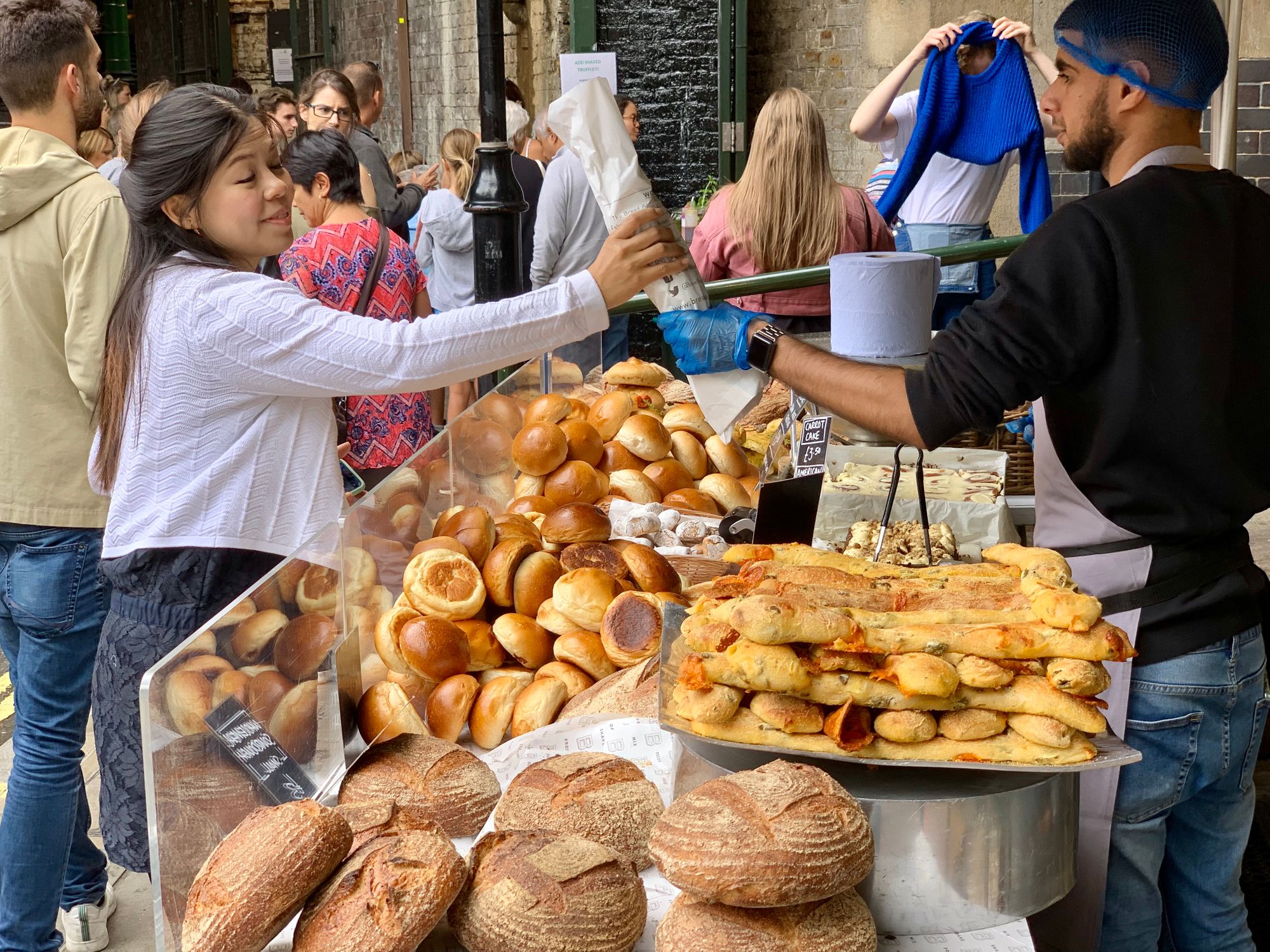
The social life that various offerings foster increases economic activity further: people go to markets not just to shop but for the social experience. That's why markets function best when they are also social hubs, allowing customers the option to sit down and have a cup of coffee, participate in an event, and meet up with friends or family.
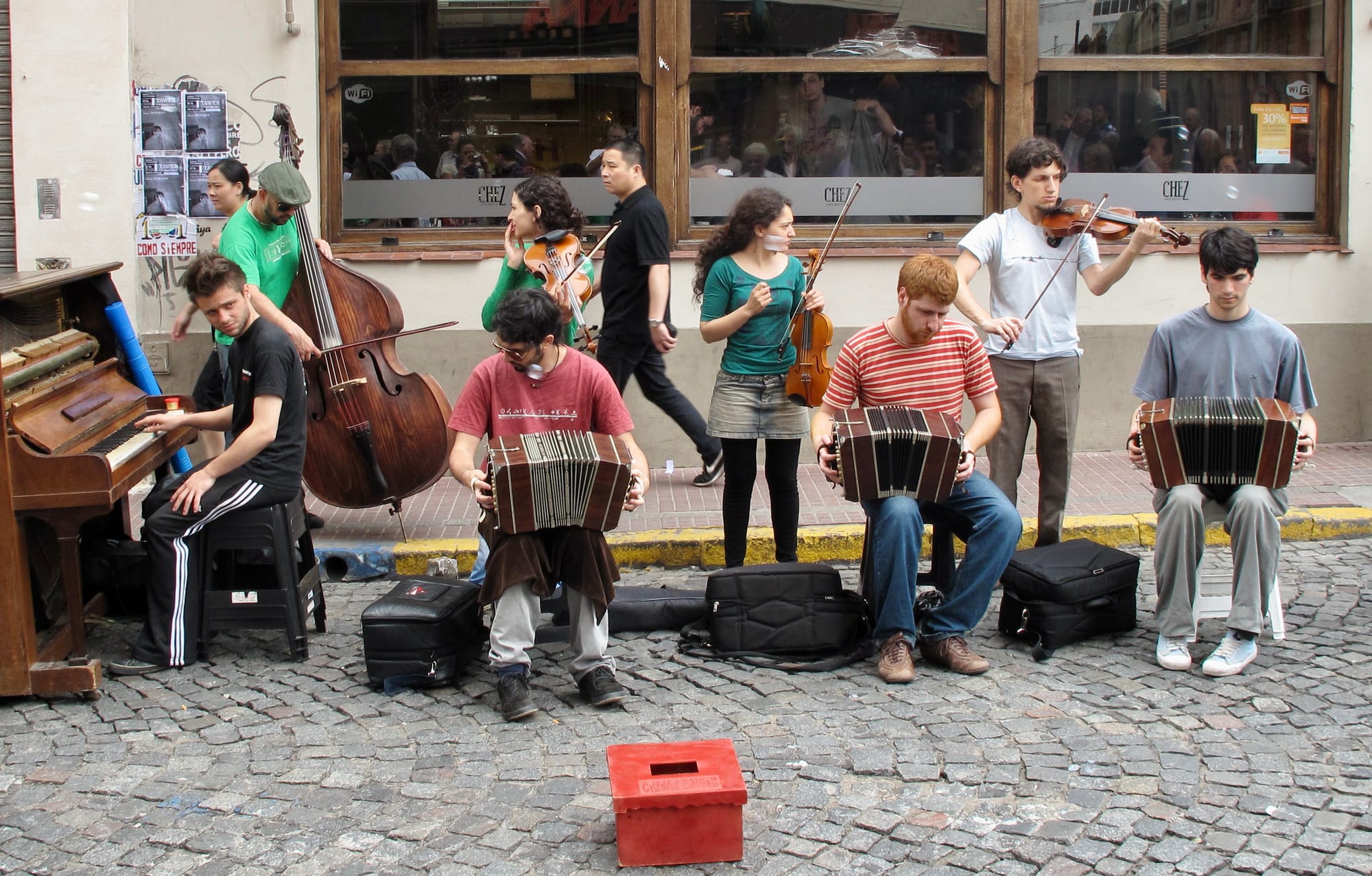
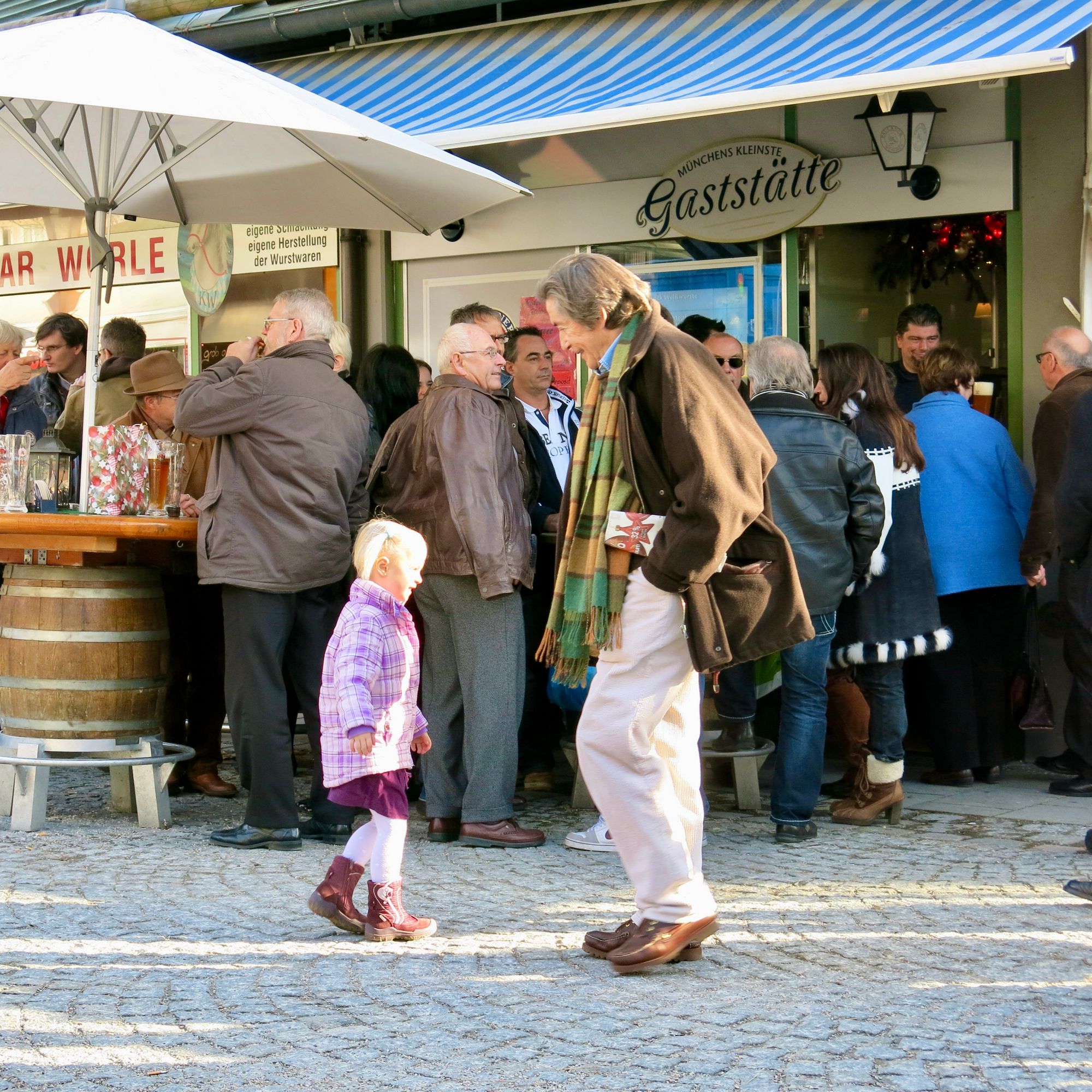
Why Squares are Good for Markets
A good square offers these kinds of social opportunities too, and the social life of squares helps to reinforce the social life of markets. A square with many other things going on is also good for a market's businesses. People might come for an event, performance, or gathering and then end up buying lunch or picking up a gift for a friend. Shopping becomes less of a chore when you can do it while having fun!
Well, what if a market is not located on a square? Then the markets should make their own "agora!" With the right public spaces, markets can be designed to become the de facto main square, which is good for both business and the community. While these market spaces can be designed to drive foot traffic to vendors more effectively, by doing so, they are really building a beloved community place that is so much more than a place to shop.
Bryant Park in New York City is the heart of Midtown and is renowned for its myriad attractions, which draw millions of people year-round. The park has been a true catalyst for the heart of Midtown. Its vibrant holiday market is part of an annual winter celebration that works because the park itself is so animated that it draws people in year round, even in freezing temperatures.
Bryant Park, New York City
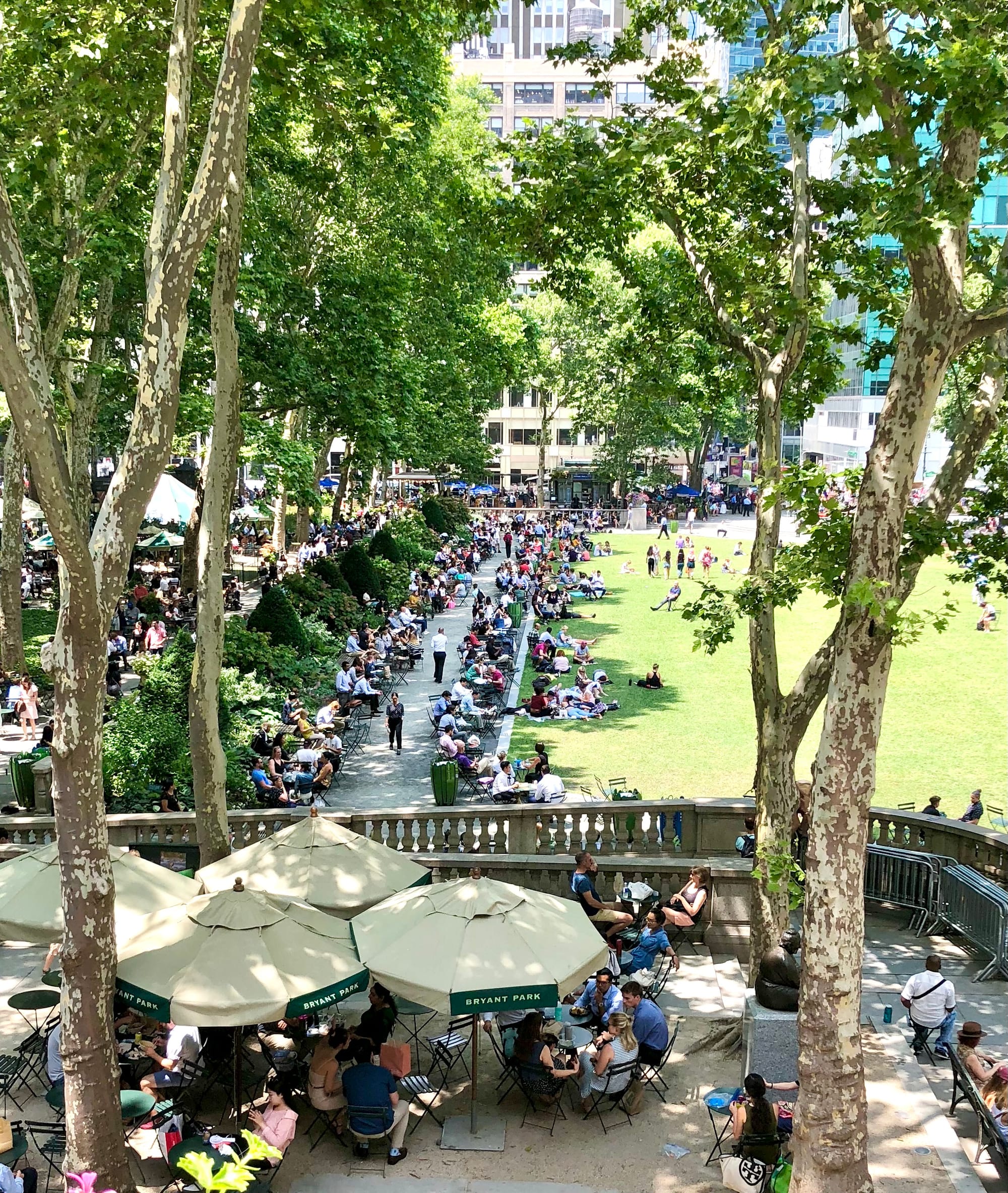
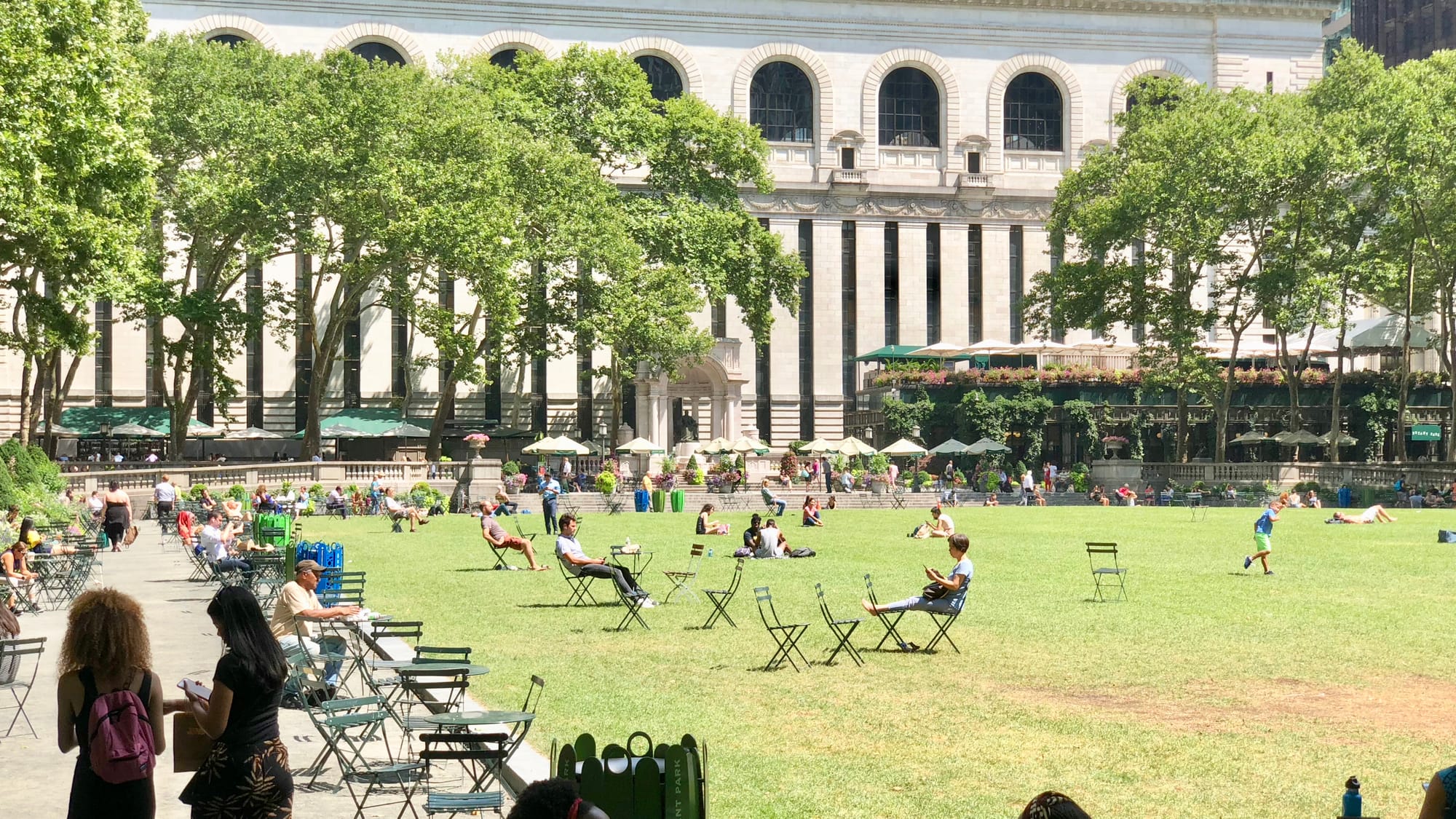
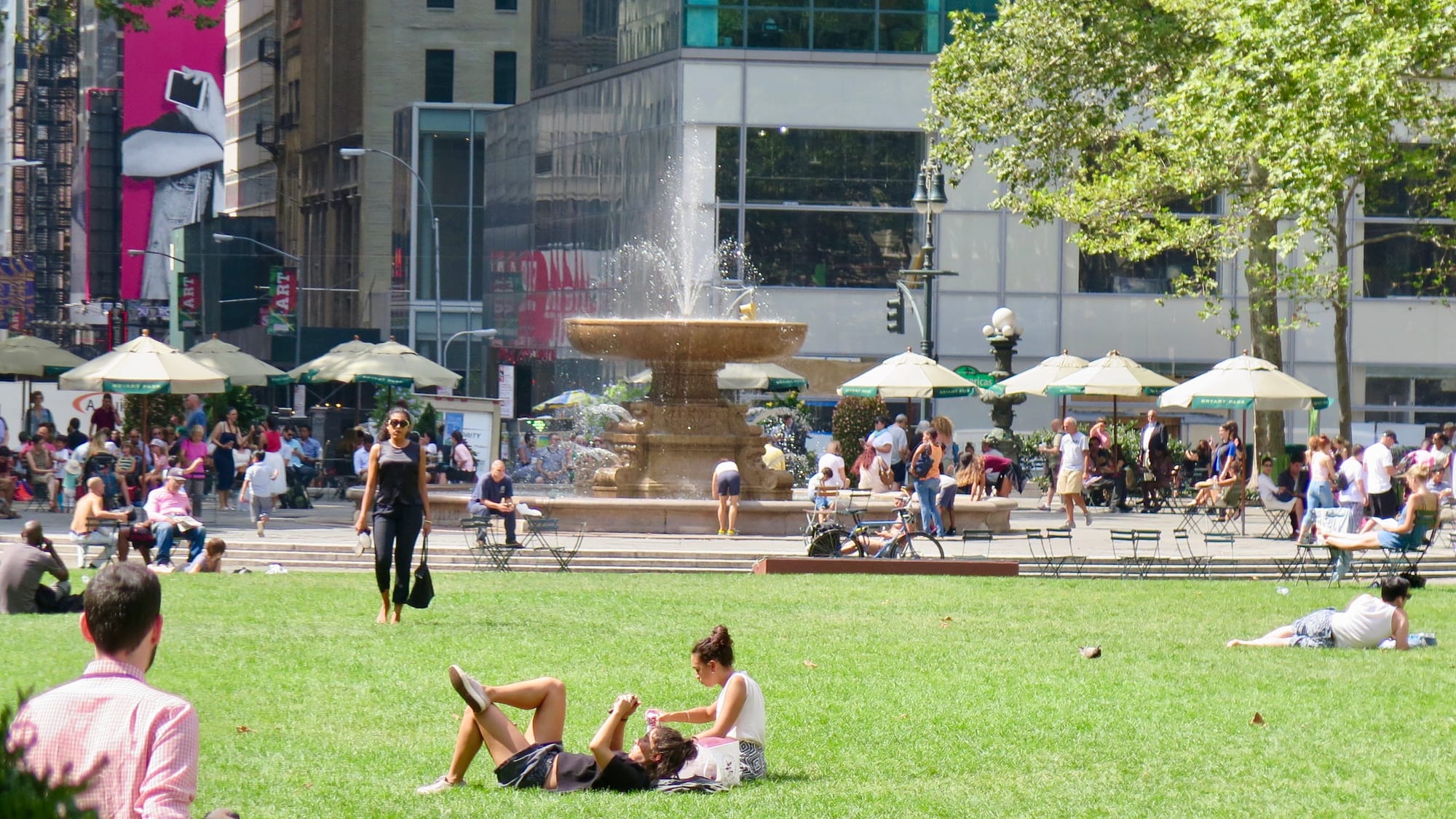
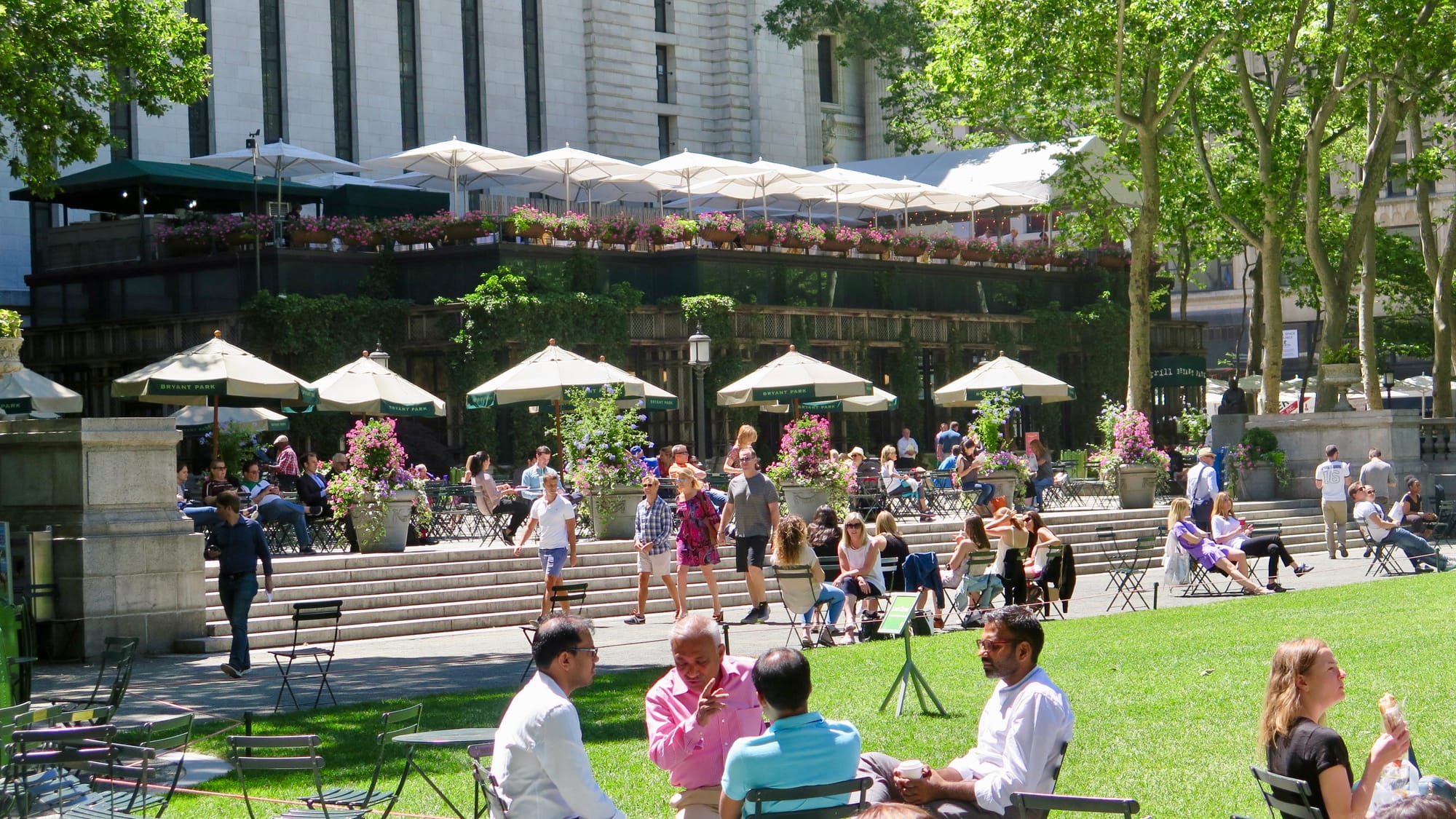
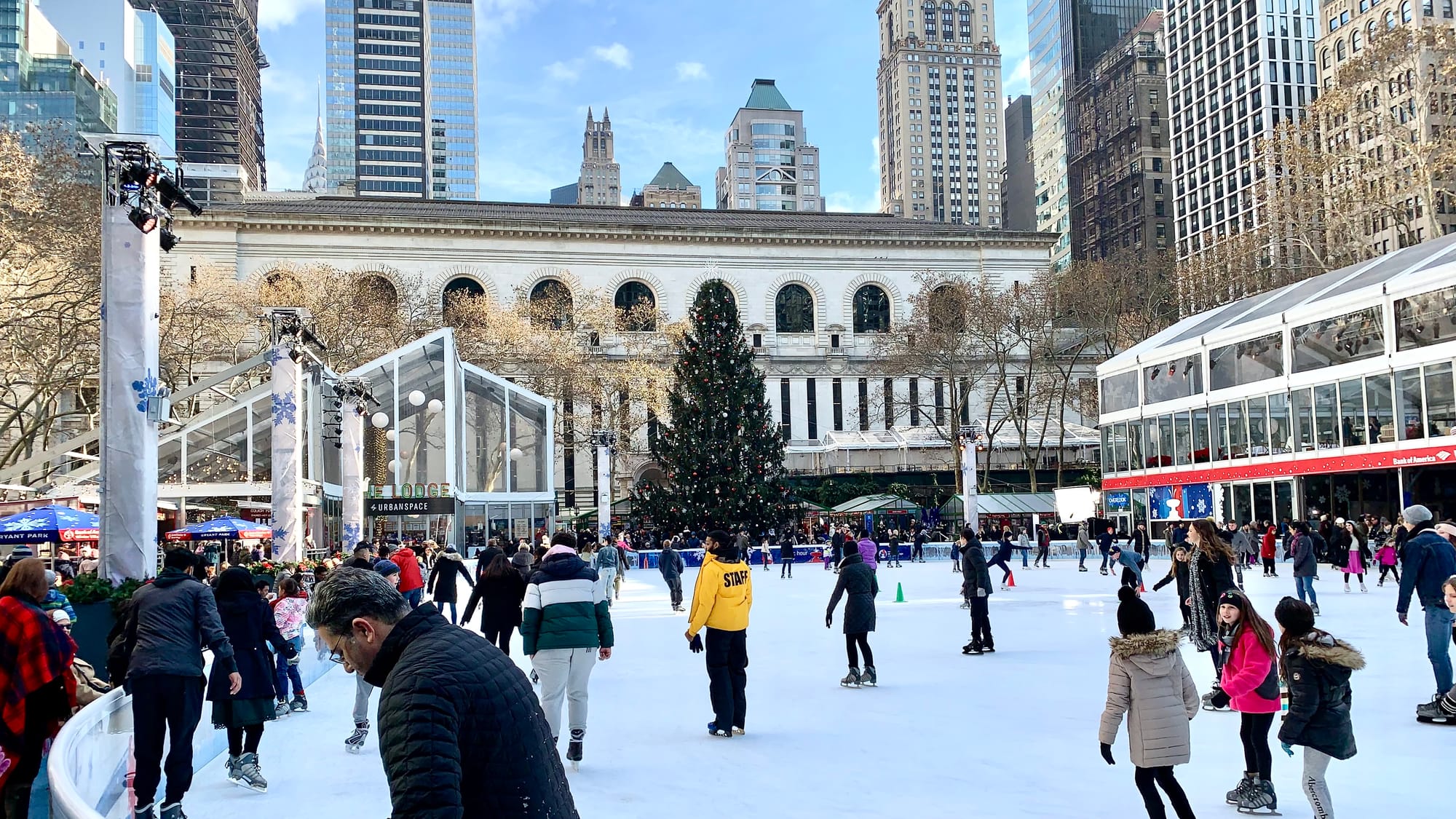
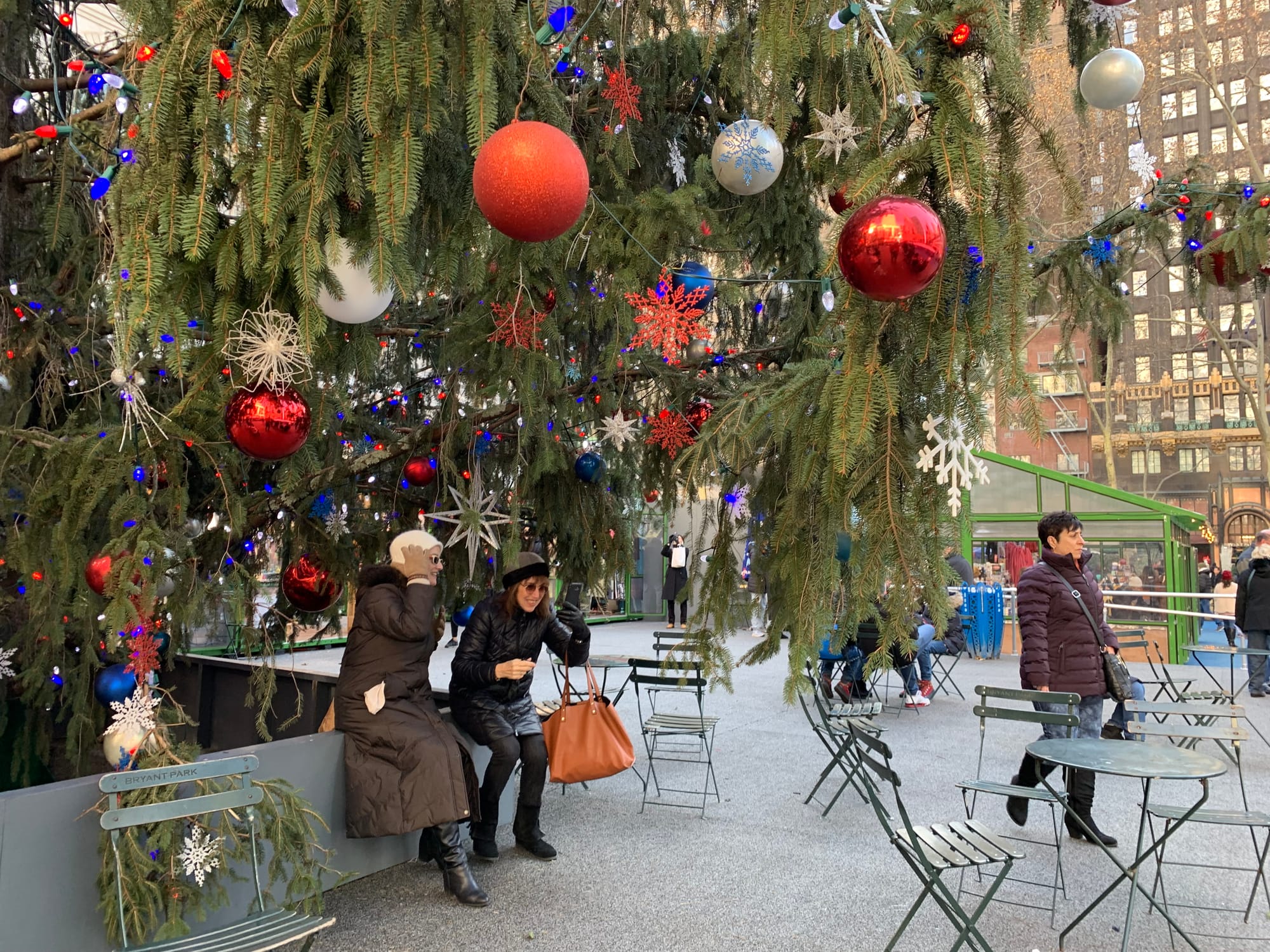
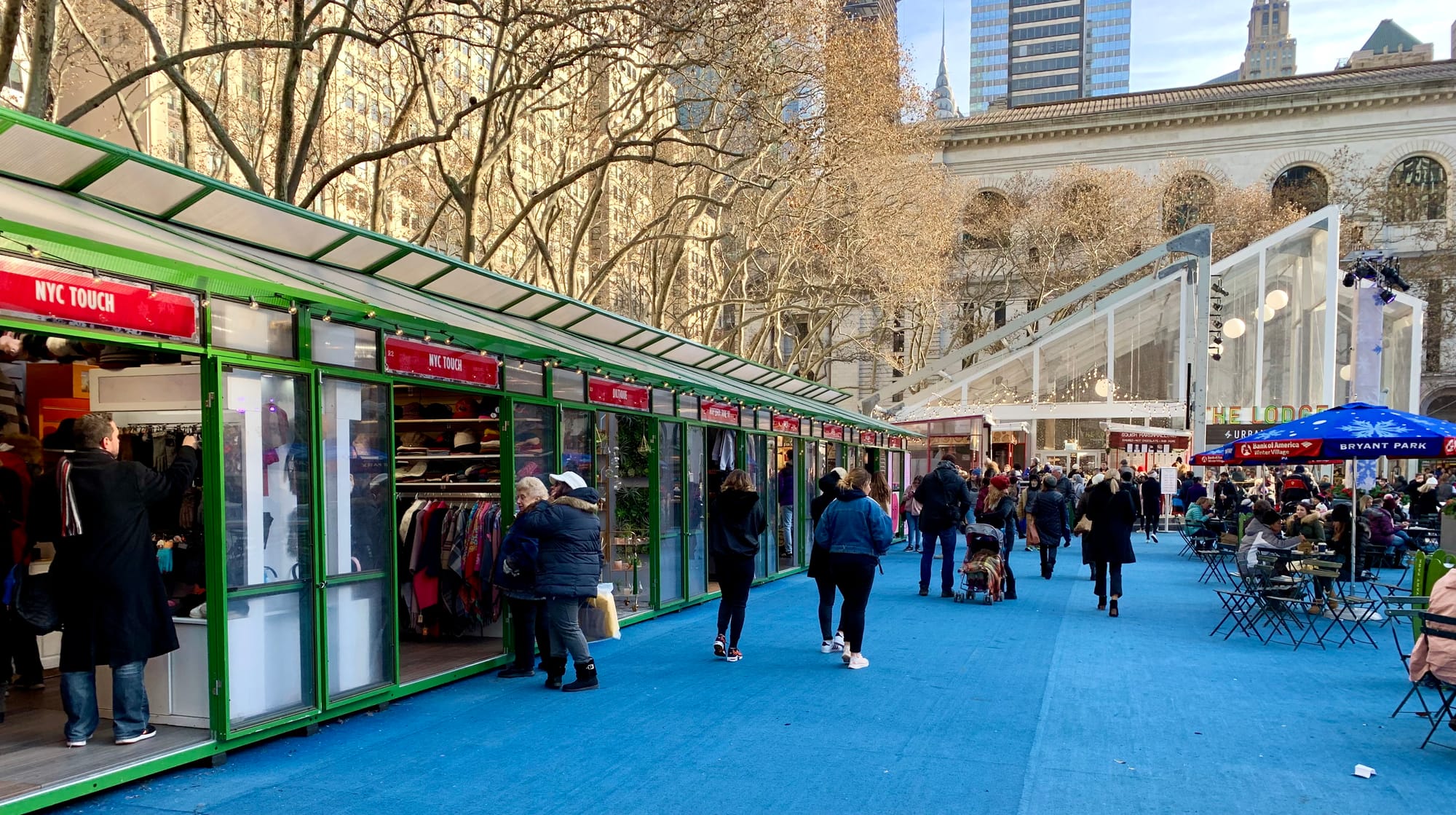
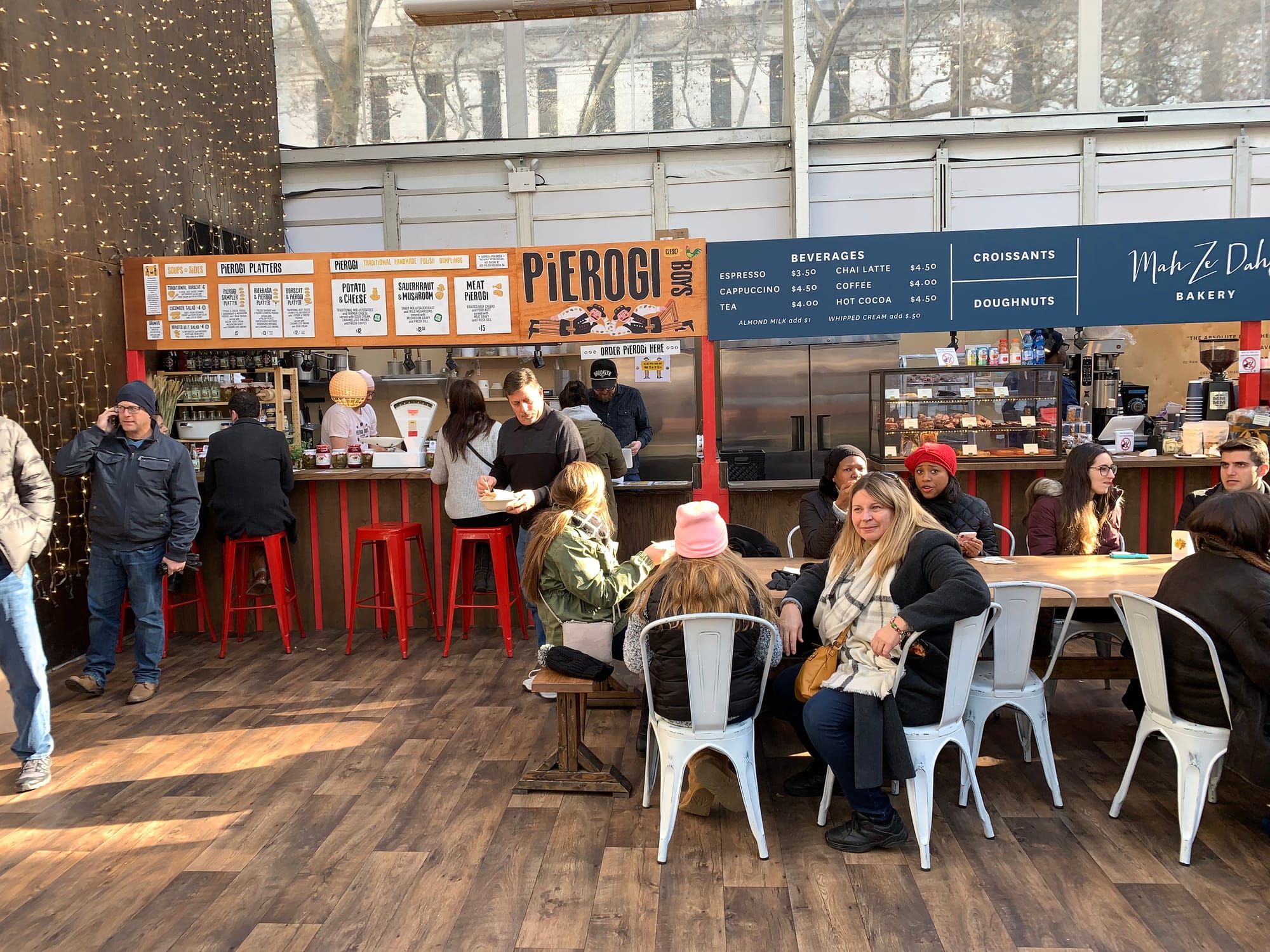
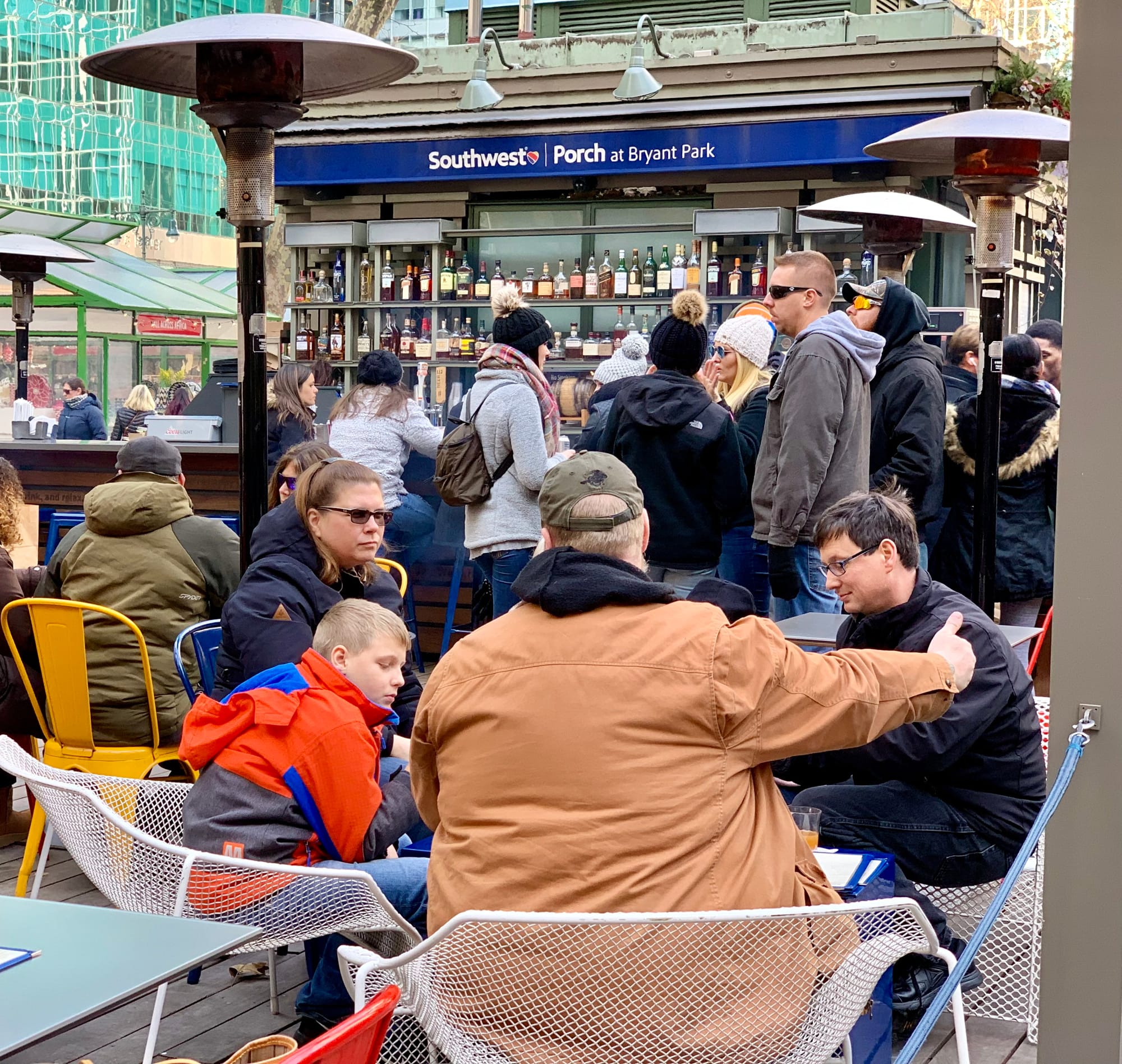
This successful marriage of square and market can be seen in other parts of the US as well — each one is a social and commercial hotspot.
Three Case Studies
NewBo City Market, Cedar Rapids, Iowa: When a Market is also the Town Square
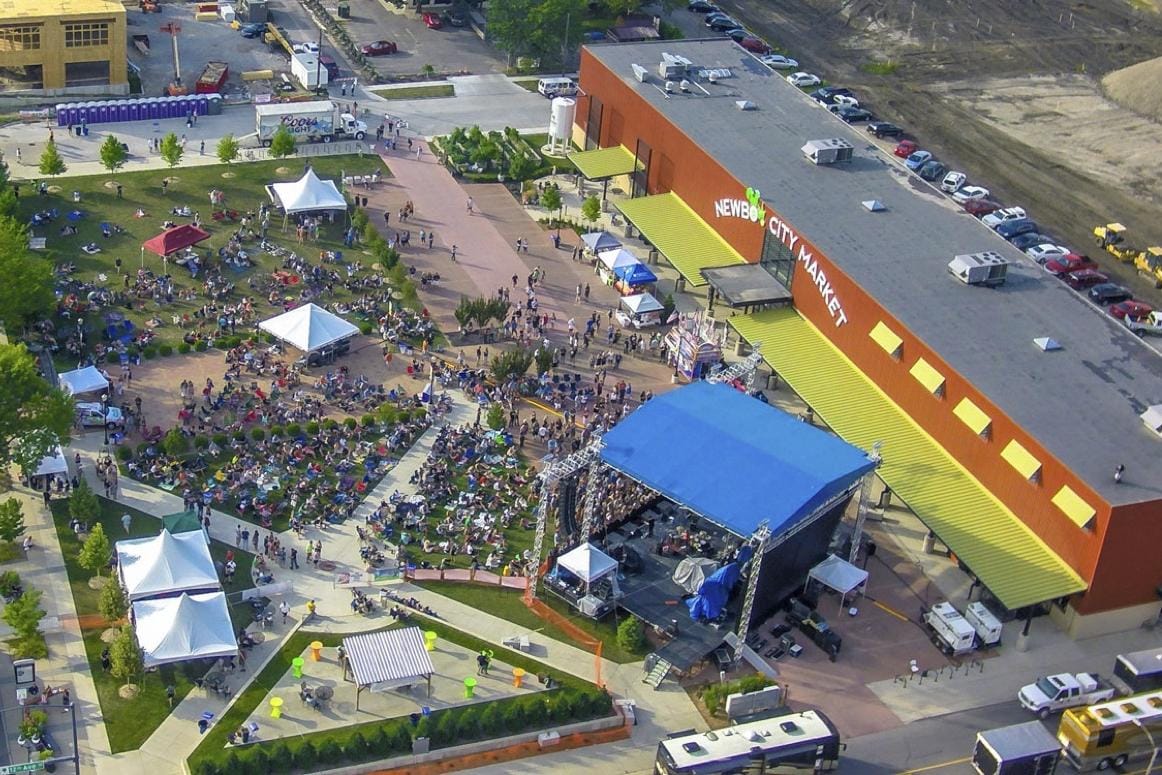
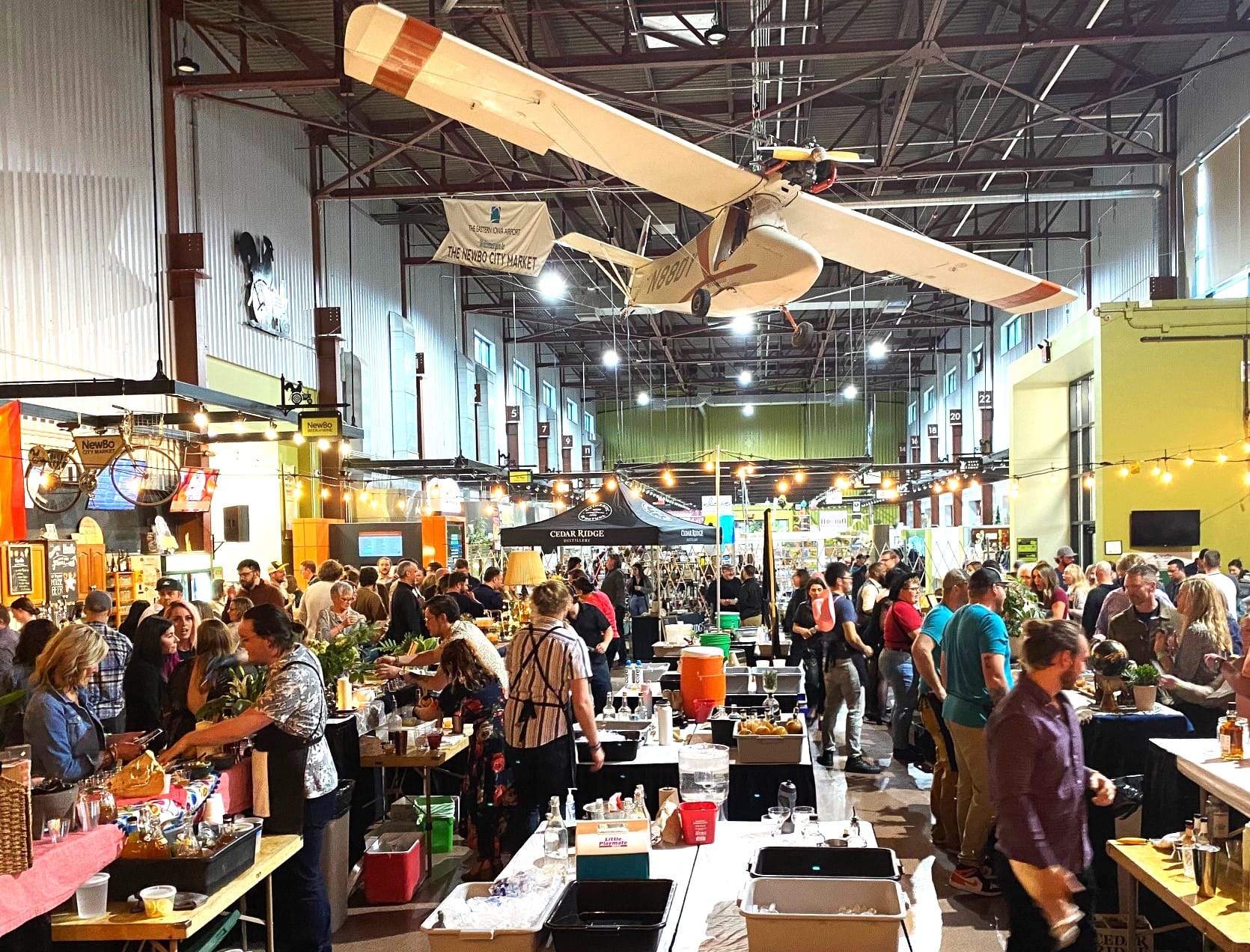
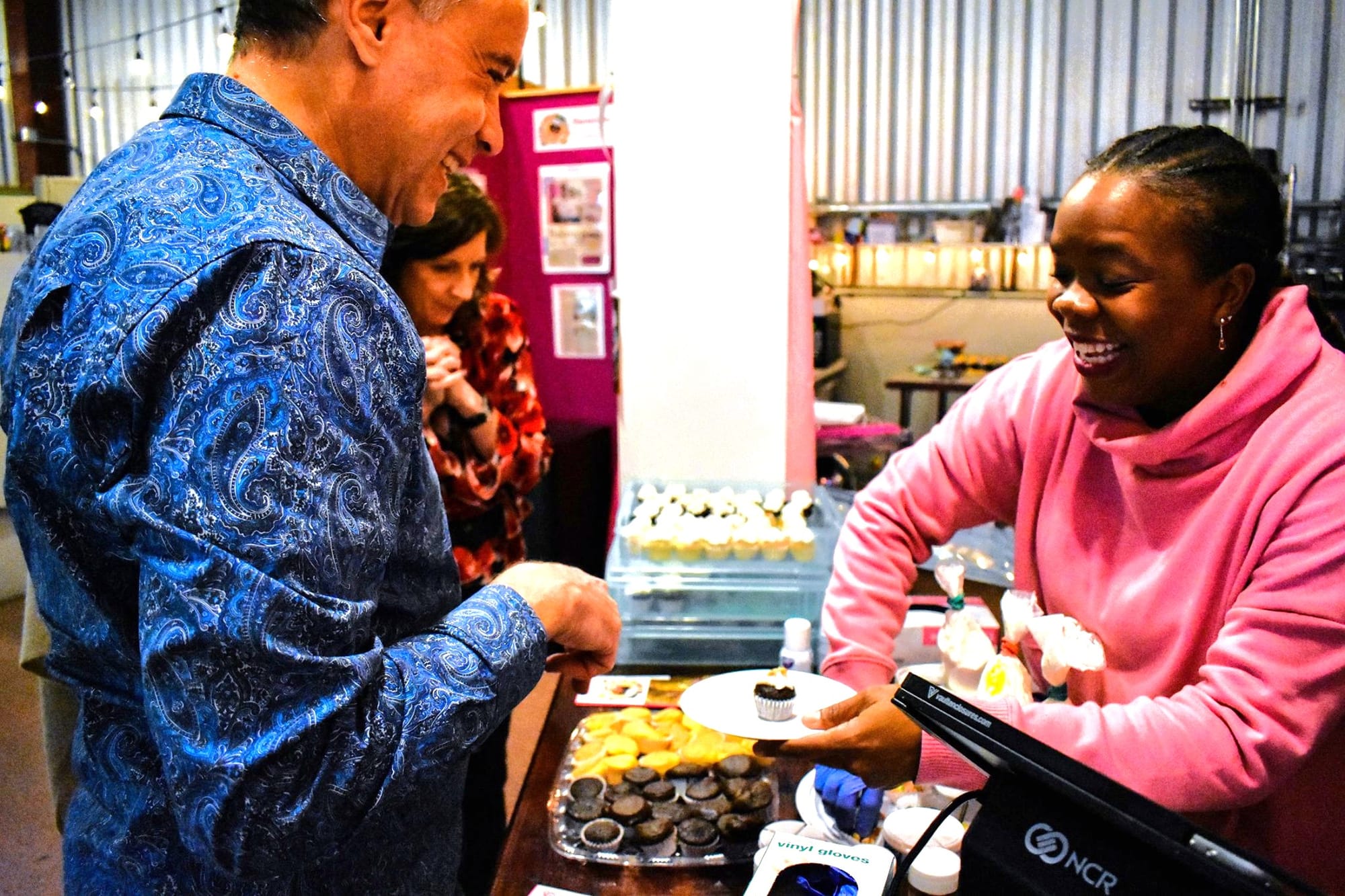
After a devastating flood in Cedar Rapids, Iowa, community activists created a new market from scratch, replacing an abandoned warehouse and a vacant lot in the emerging NewBo district, thereby launching one of the best city squares in the U.S. in the process. There's a vibrant synergy between the market's role as a public gathering place and its mission as a business incubator for new entrepreneurs.
Corona Plaza, Queens (New York City): How Street Vendors Created the Soul of a Queens Neighborhood
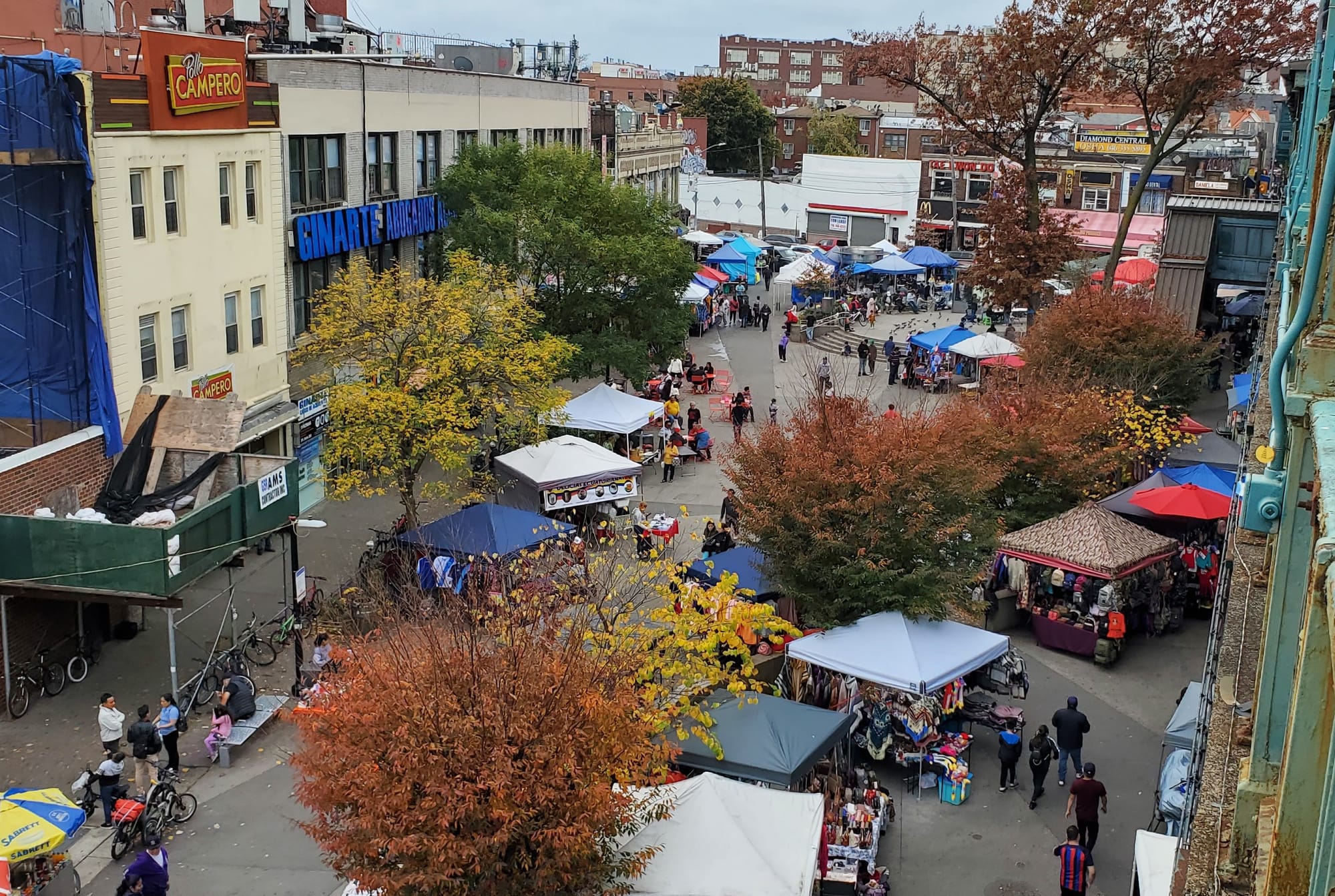
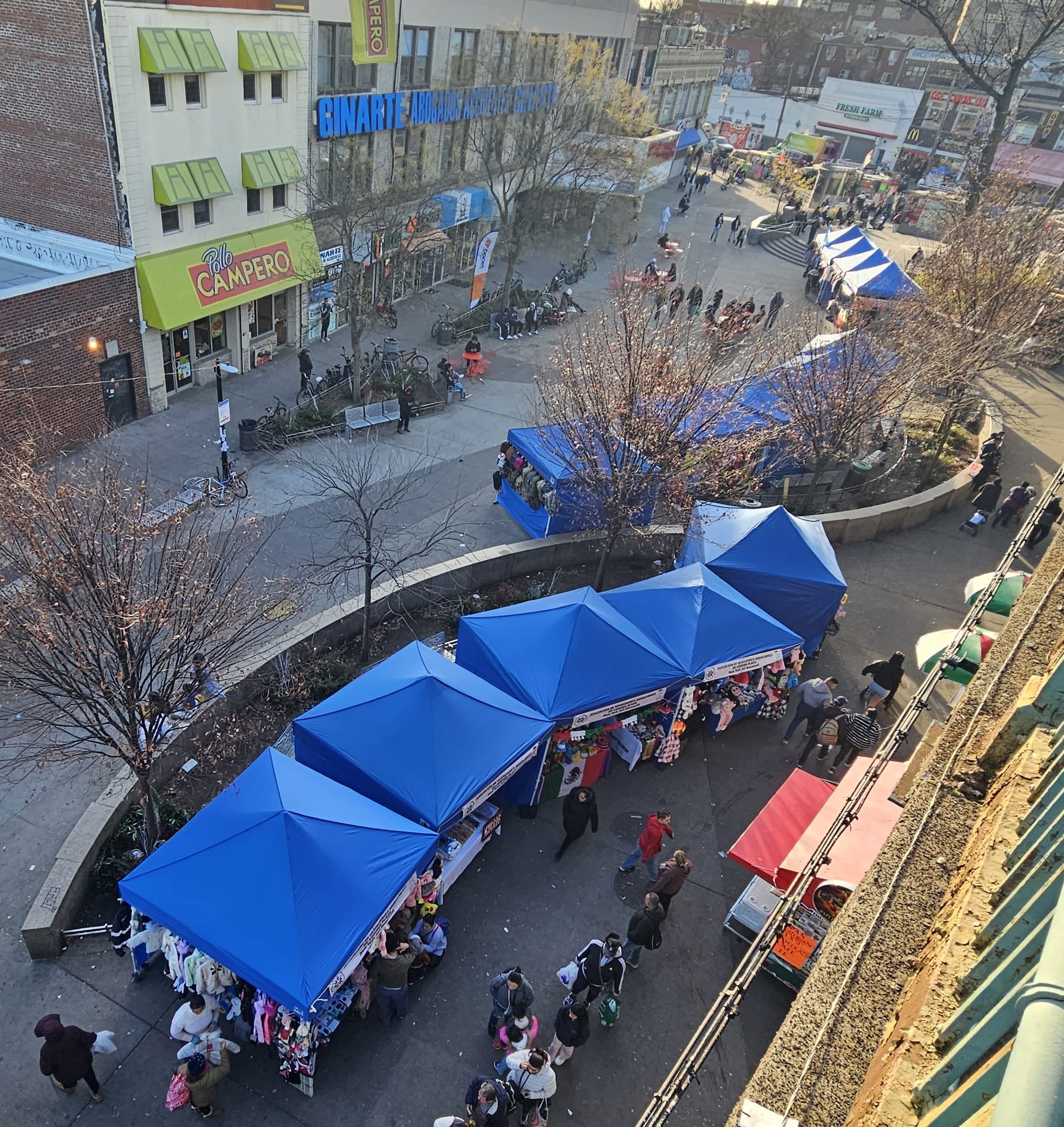
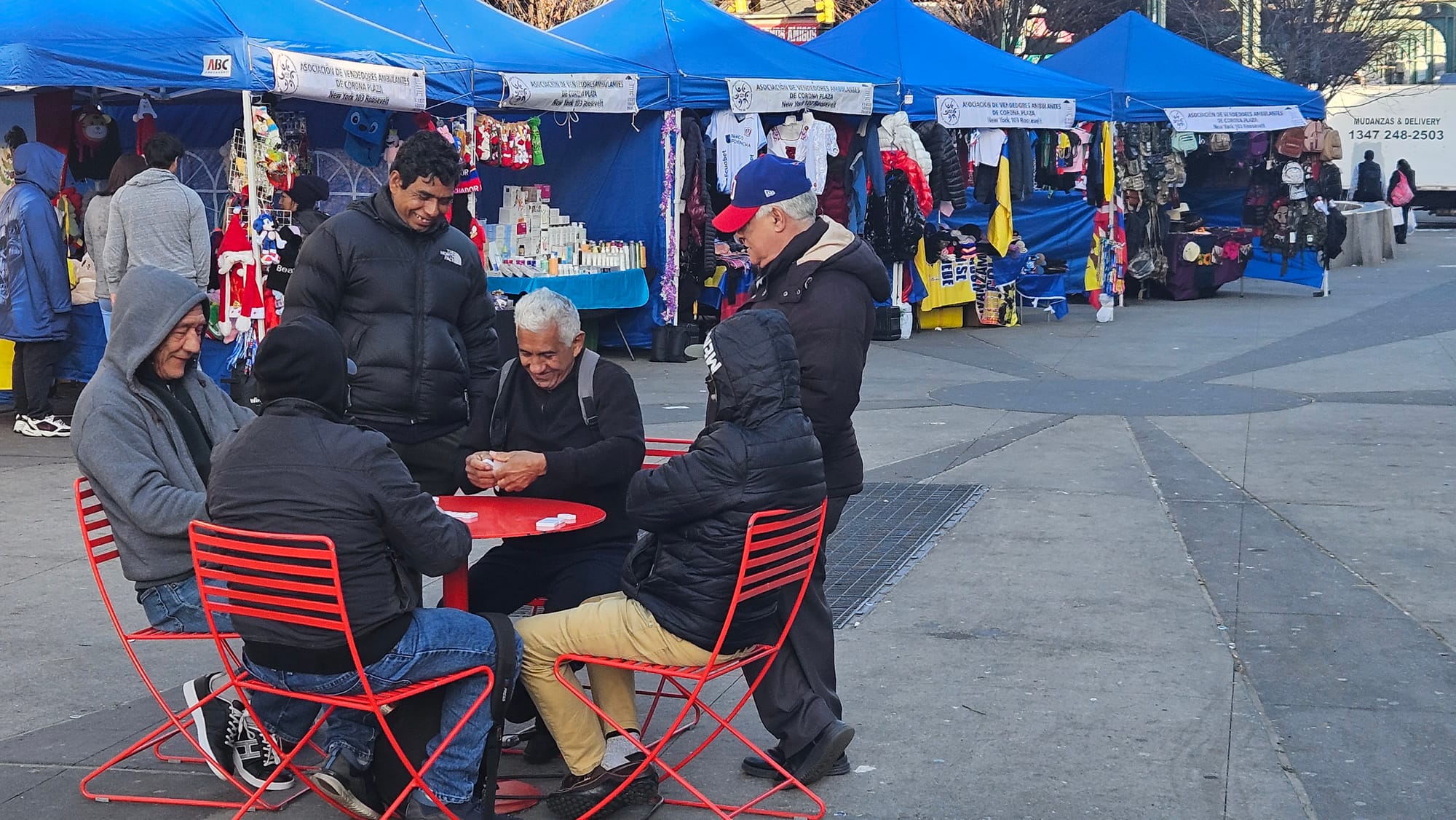
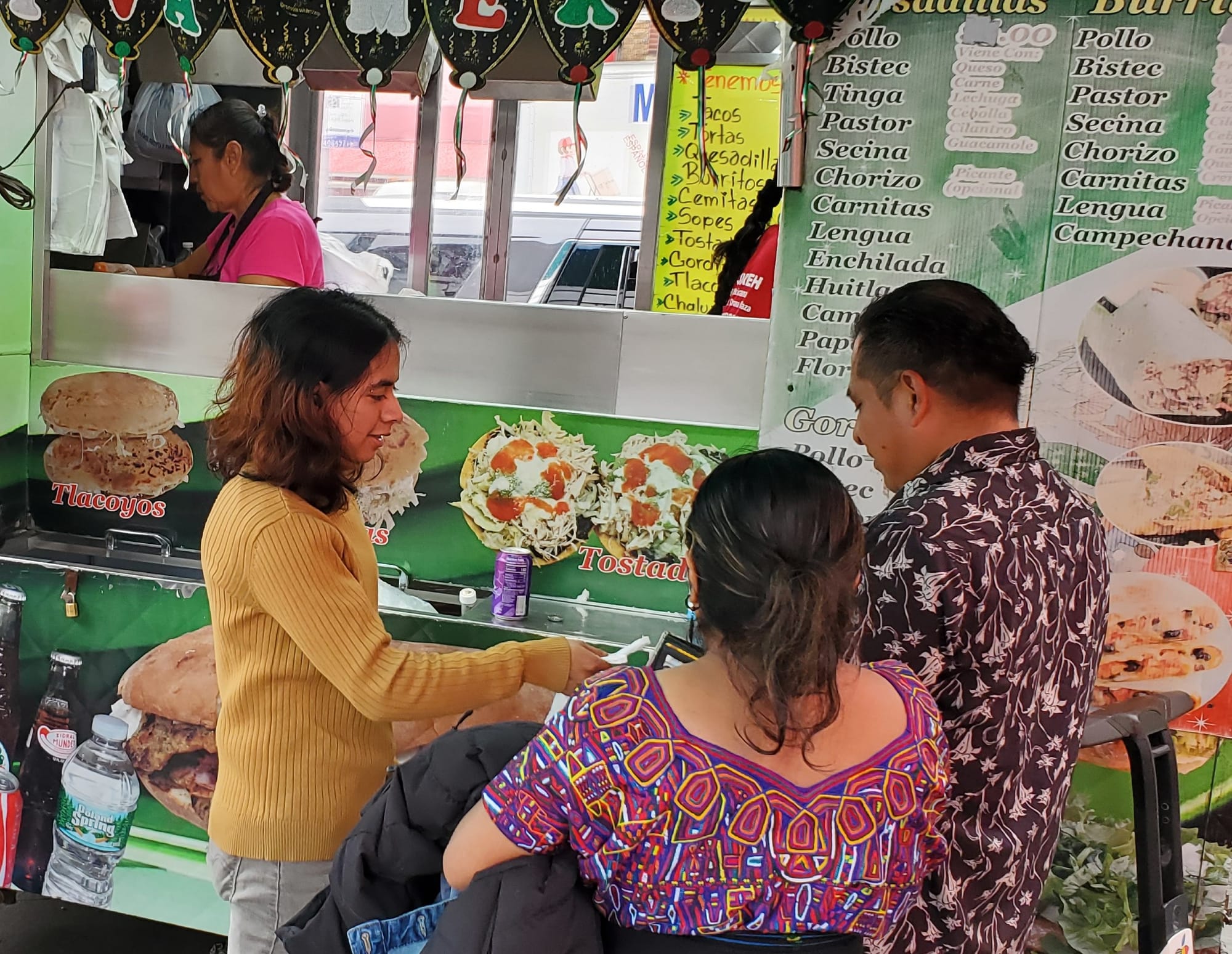
During the pandemic, some 80 immigrant street vendors from Latin America seeking a livelihood began selling their wares at Corona Plaza, Queens and quickly became something of a sensation in the neighborhood and in New York City. The vendors created viable businesses that energized the previously underutilized plaza. But because they were operating without permits, the City of New York shut them down in the summer of 2023, dissipating the energy of the plaza. Following public outcry, the vendors are now back legally after the city developed a special permit mechanism that enabled the creation of a formal marketplace.
Flint Farmers Market, Flint, Michigan: A Market Designed Around Public Spaces and Social Life
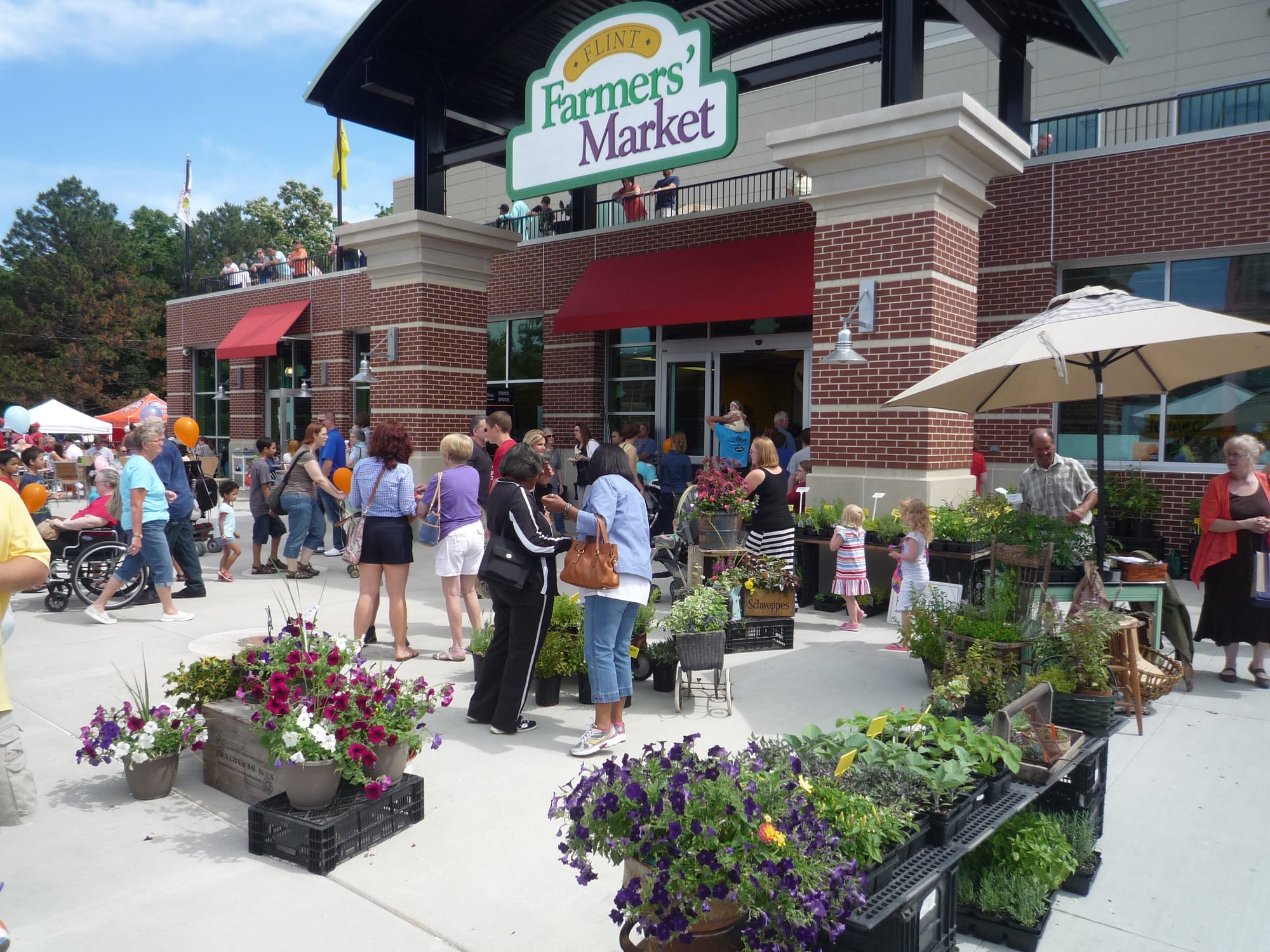
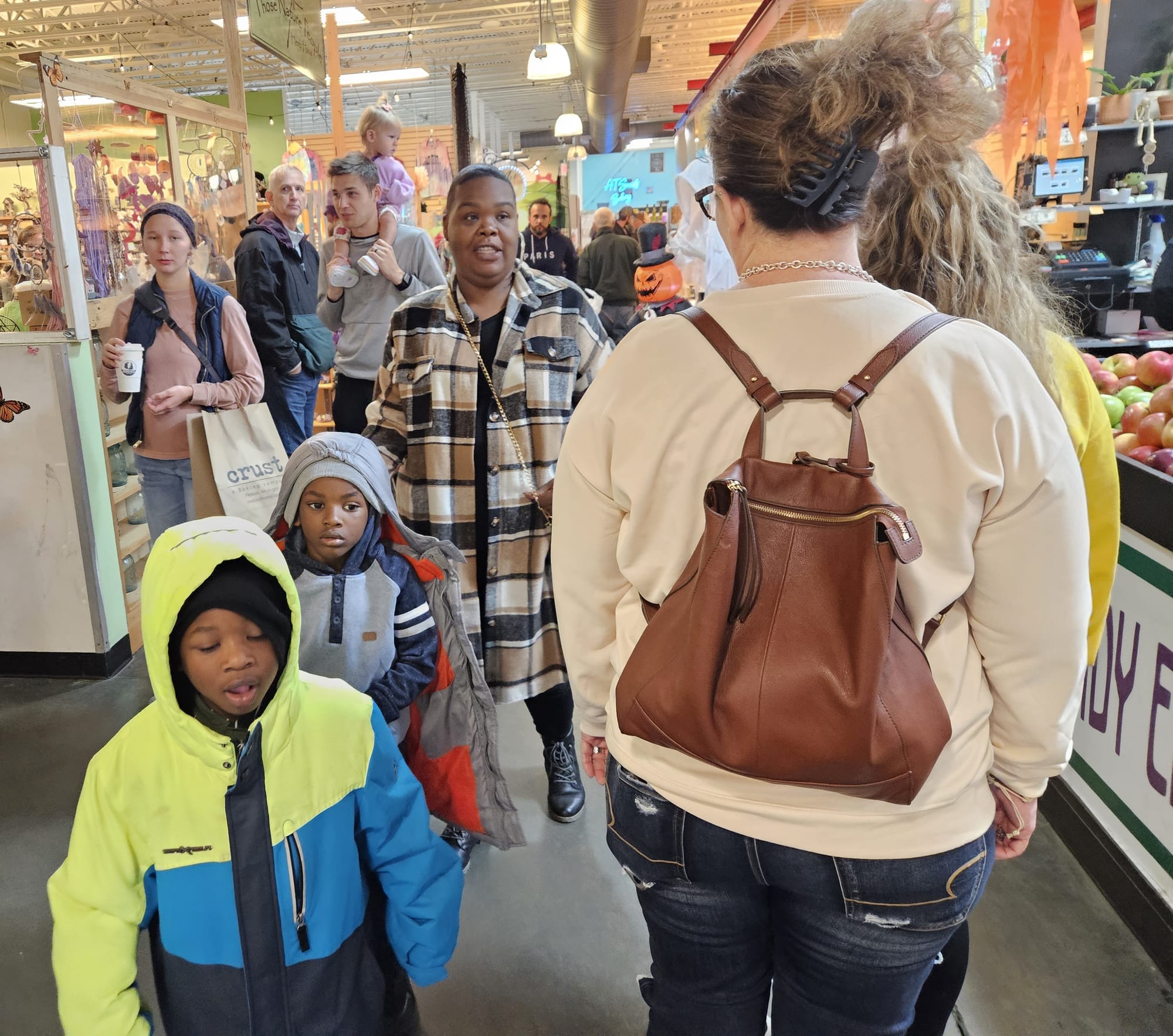
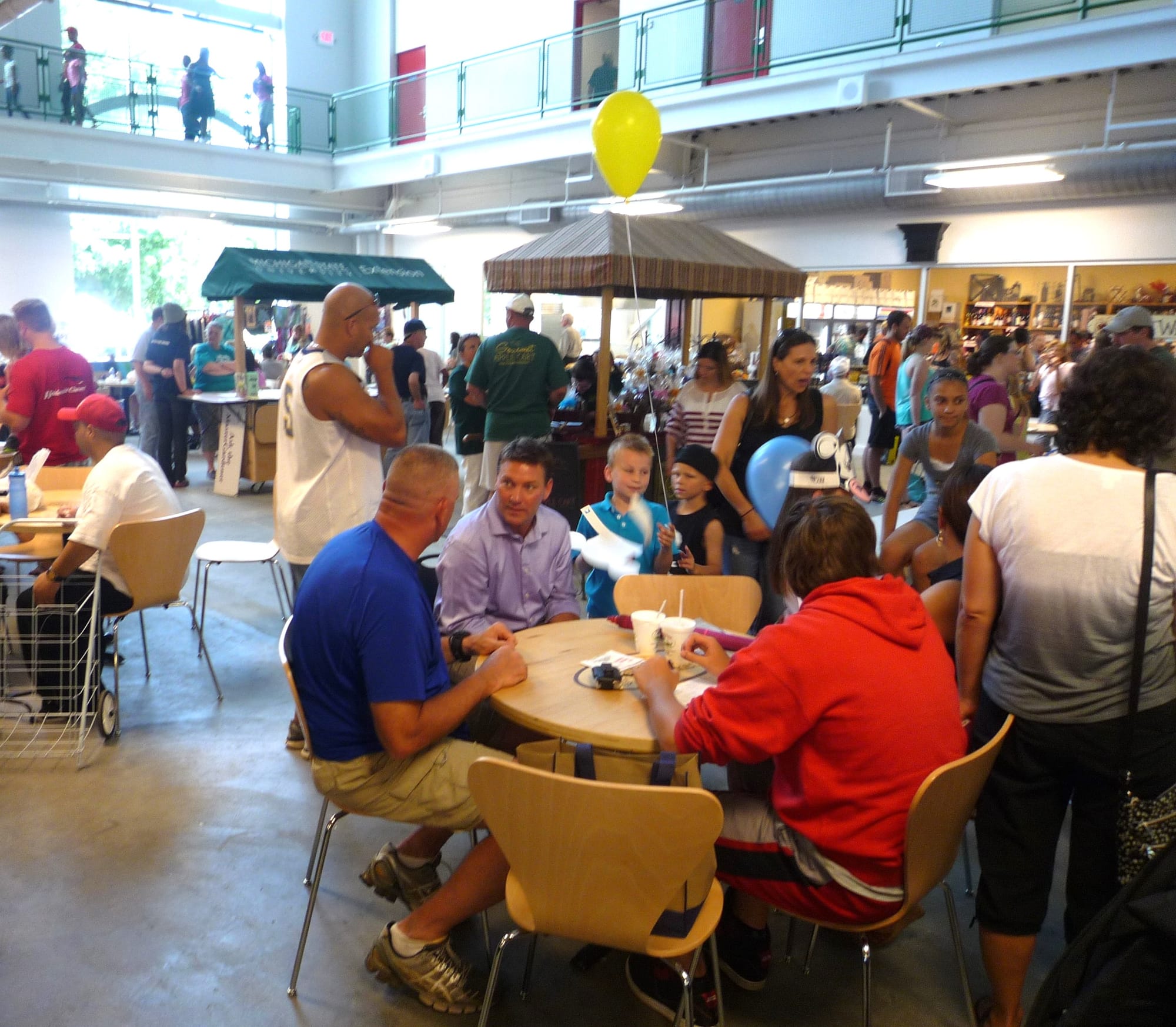
For over a century, the Flint Farmers Market has been a treasured community institution. In 2014, the market moved to a new location in downtown Flint in a 10-year-old printing press building adjacent to the University of Michigan campus. The new building was larger than the market's previous location and presented the opportunity to not just house the market, but also a range of indoor and outdoor public spaces that now act as important draws. The market has become Flint's de facto town square, and home to some 50 local, thriving businesses and hundreds of community events every year.
The Key to Prosperity
Markets are not only bustling with local economic activity, but they also add intense vibrancy to whatever place in which they are set. They are beautiful equalizers and a true "melting pot" of communities because people from all walks of life get together on equal footing to do business together. Customers from all backgrounds share the space with vendors from all backgrounds, and together, they enjoy the experience of the market in each other's company.
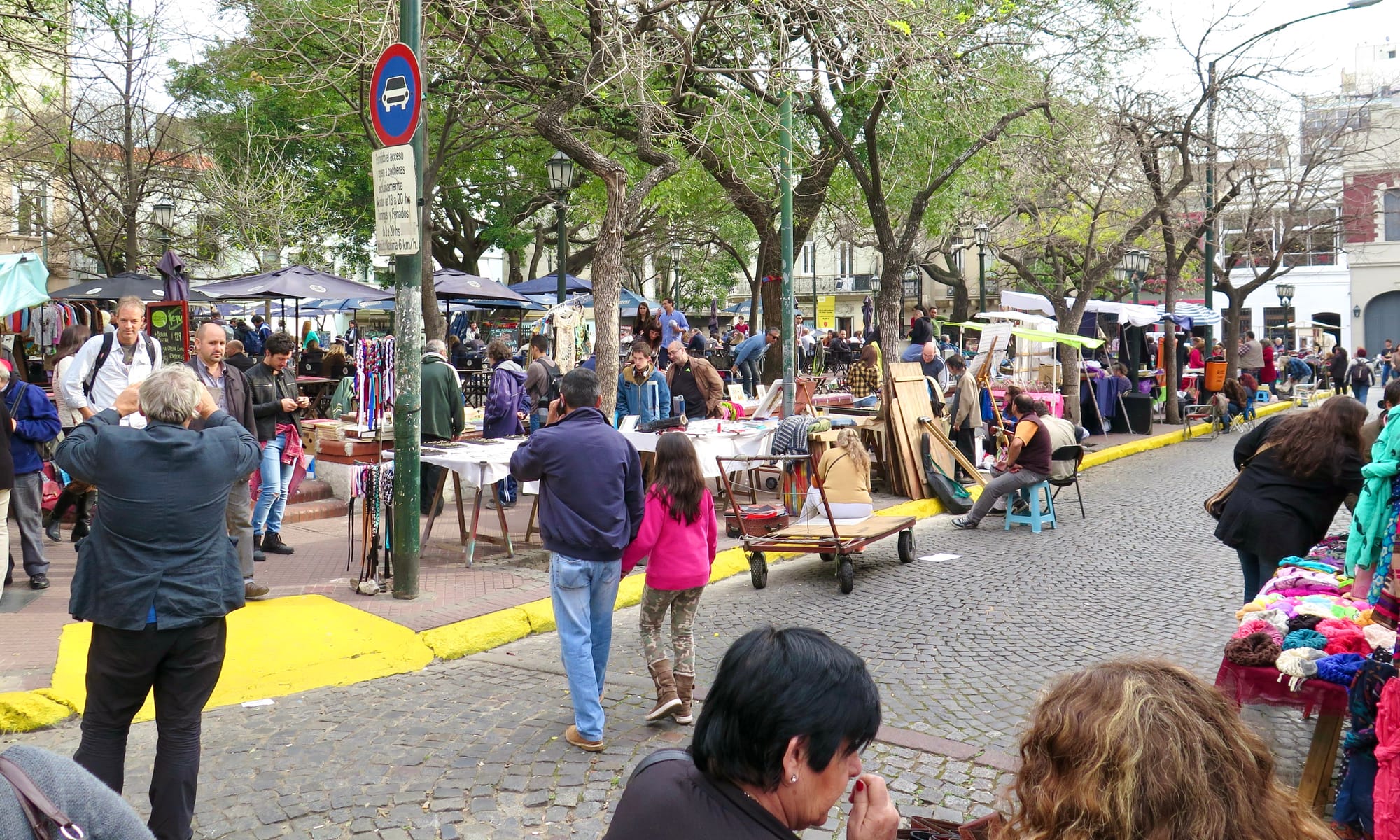
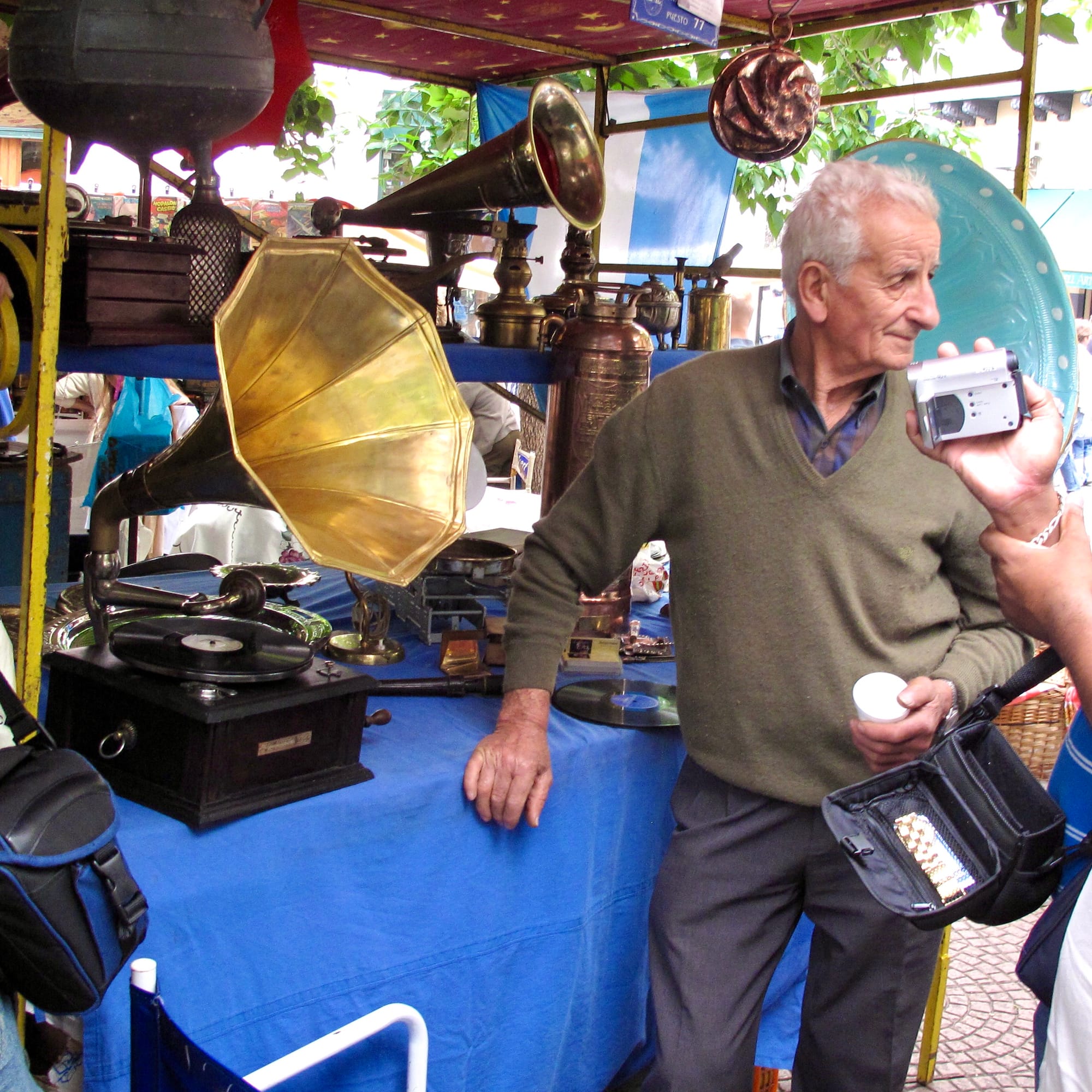
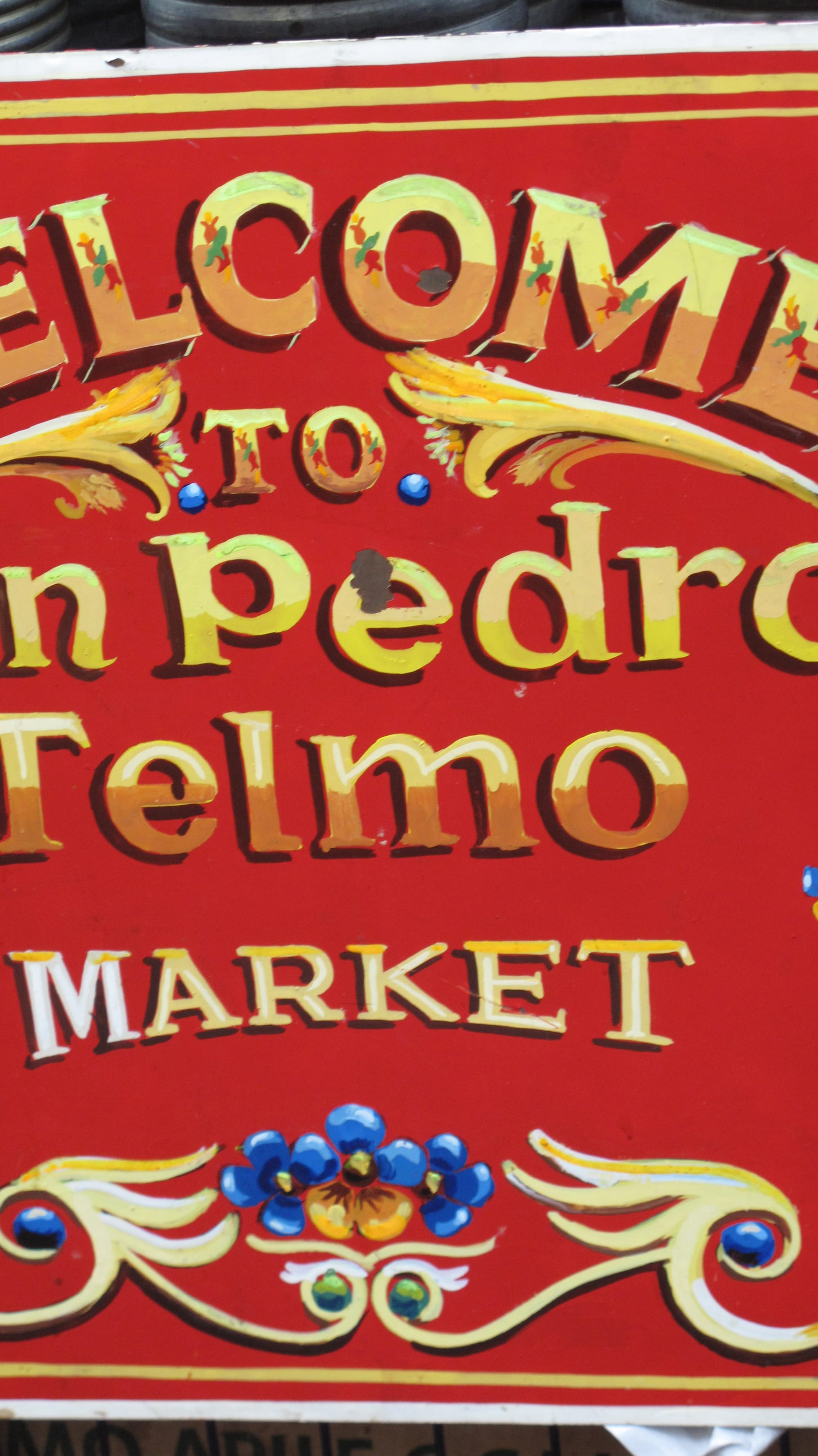
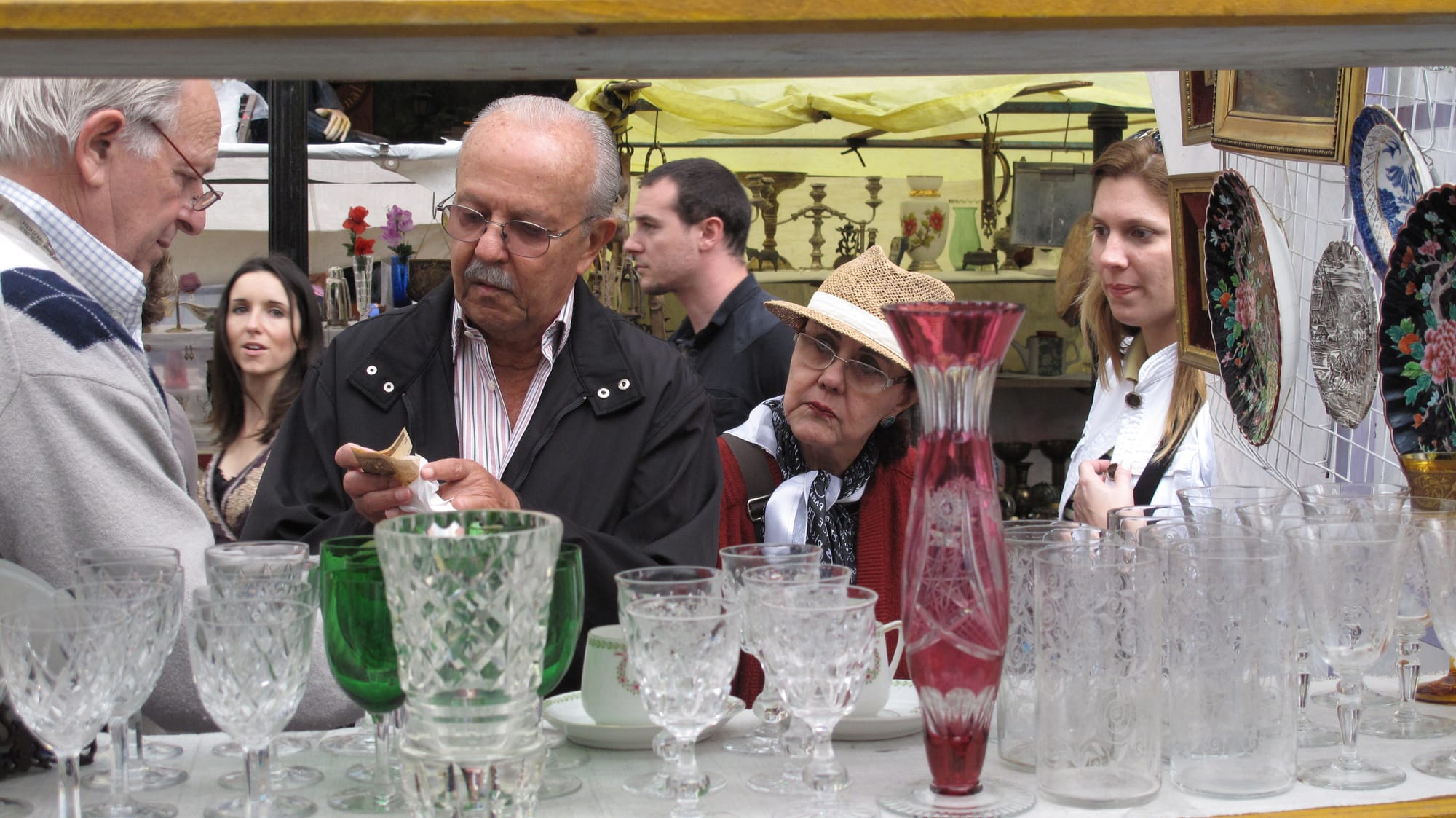
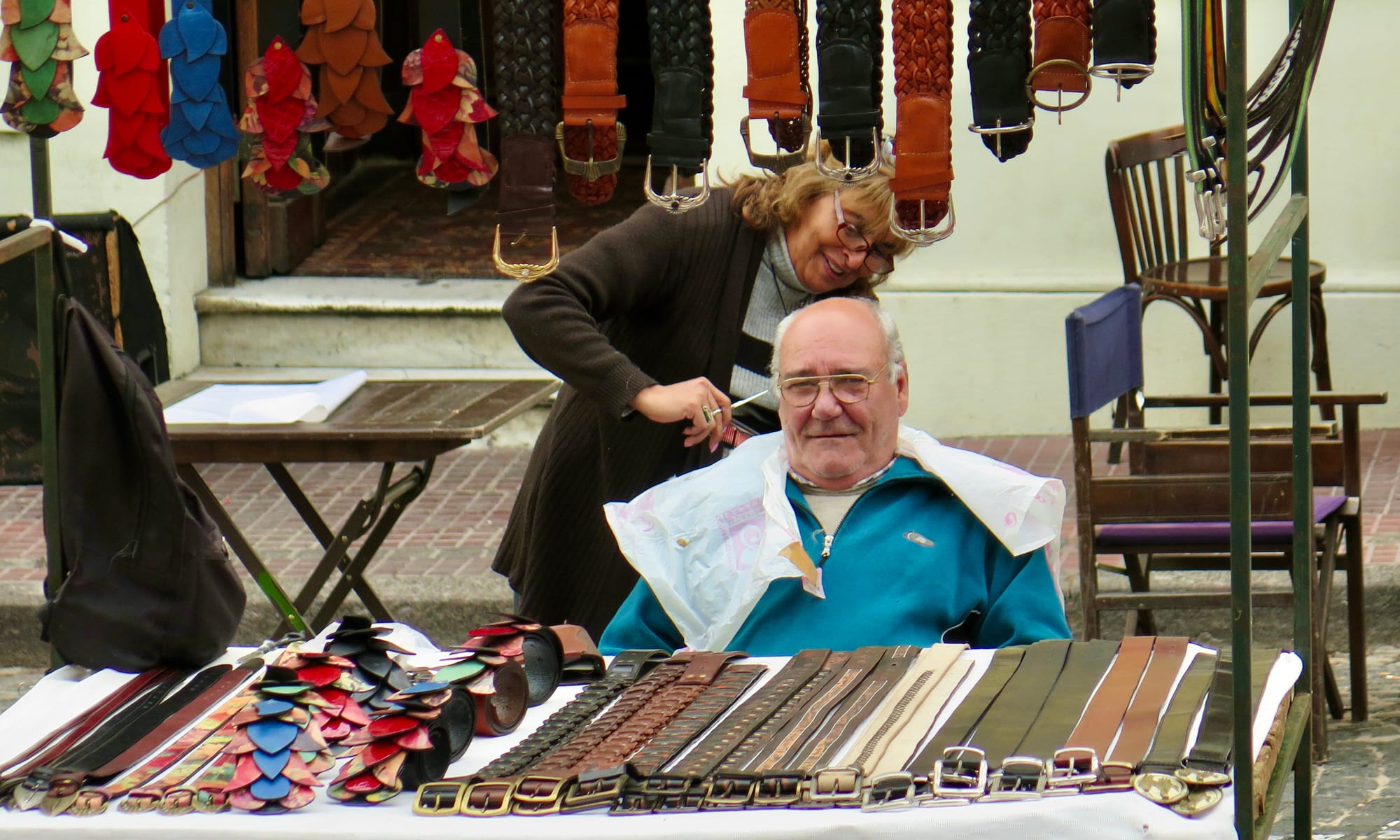
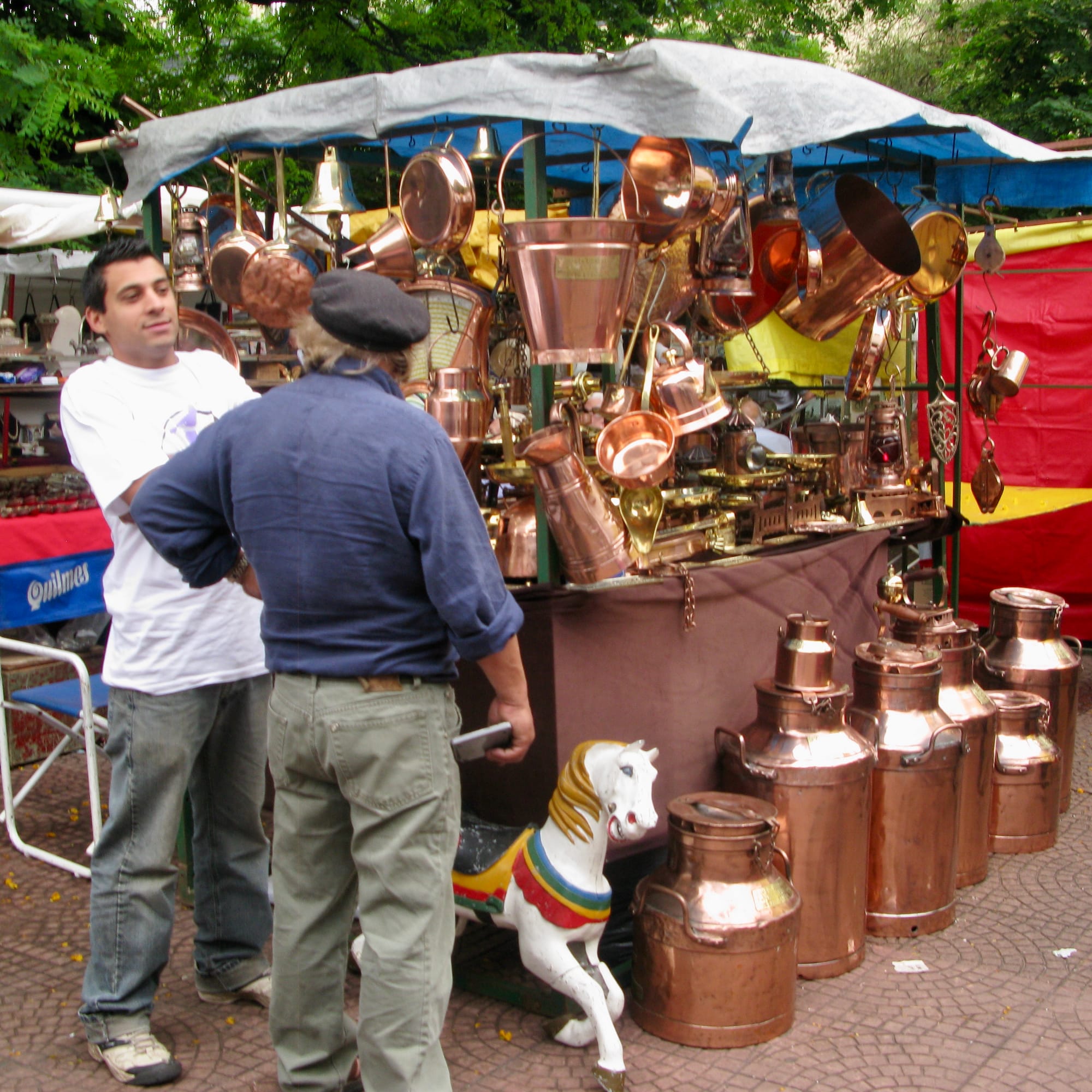
It is natural that the diversity and social life inherent to a market spills out into the square it stands on and into the neighborhoods around it– and vice versa – creating thriving and economically prosperous communities. The key to bringing a city to life is creating its heart and soul through the square and the market, a powerful partnership.
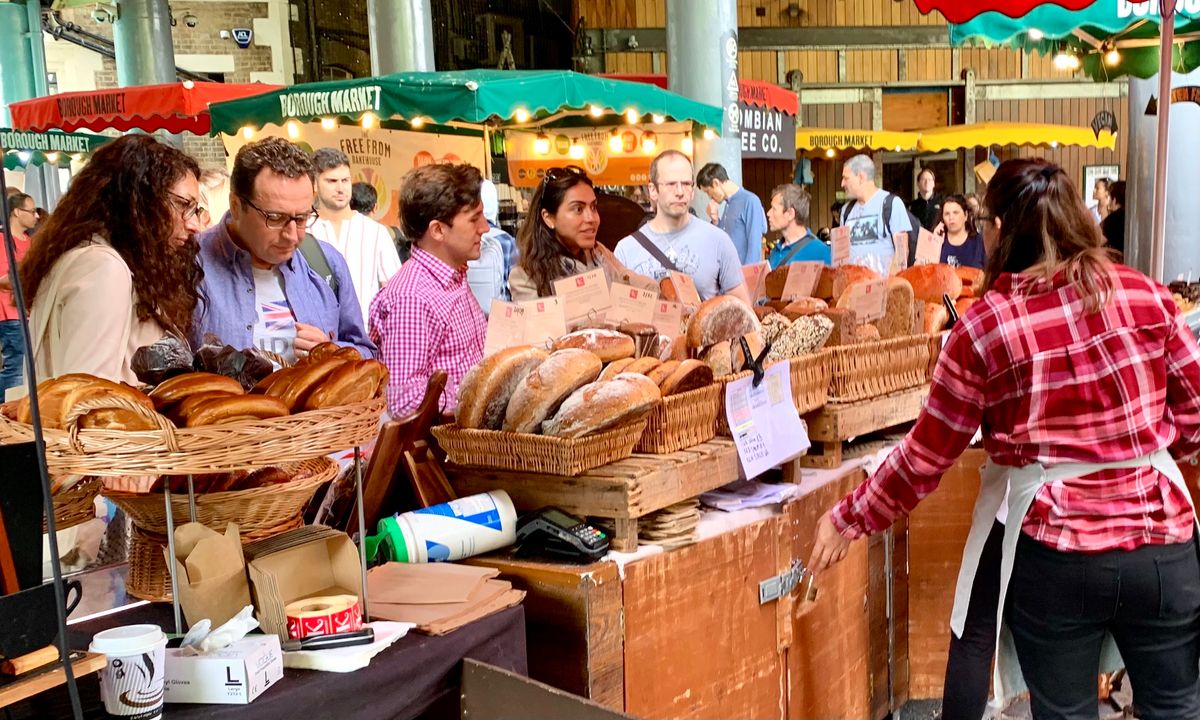
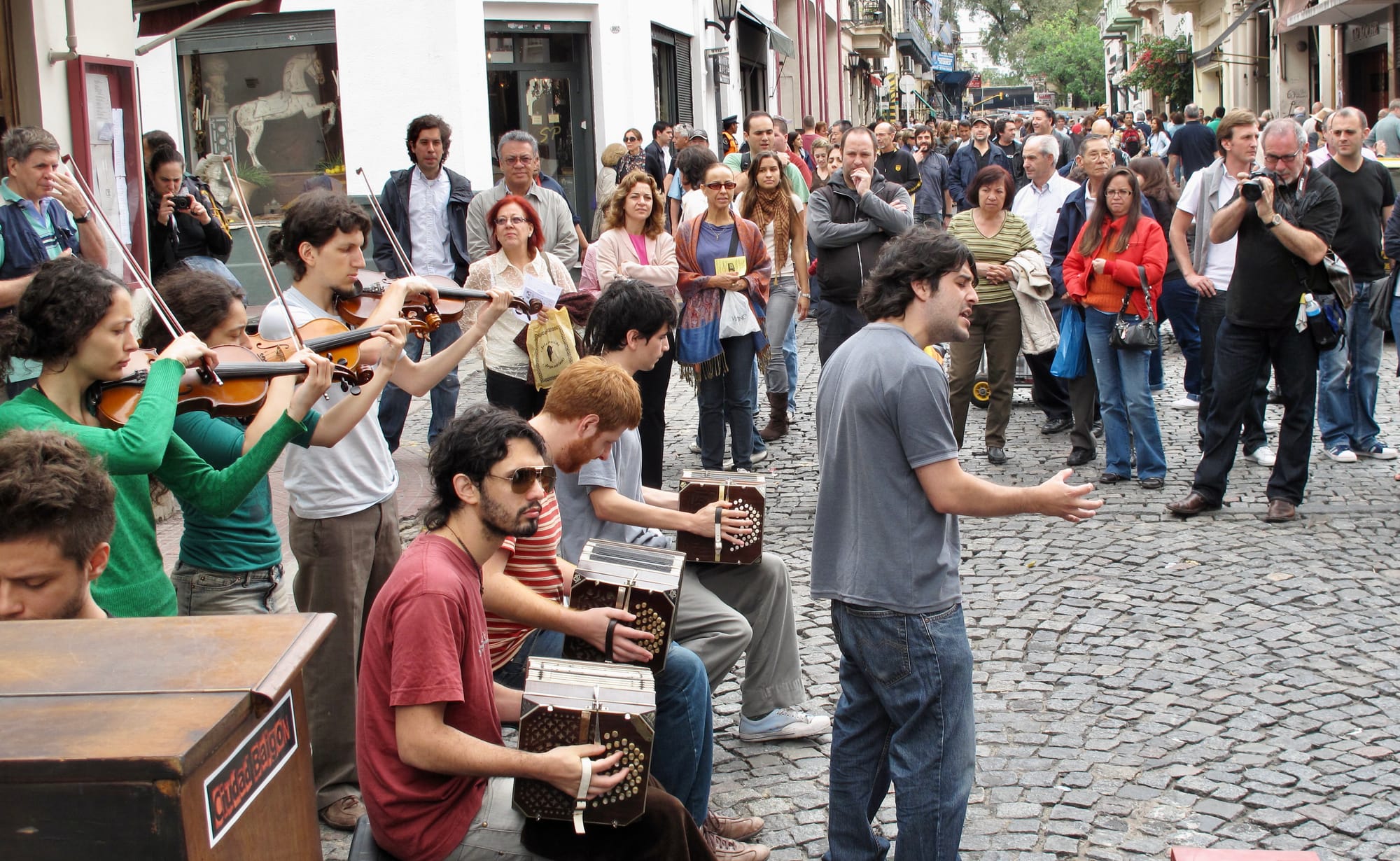
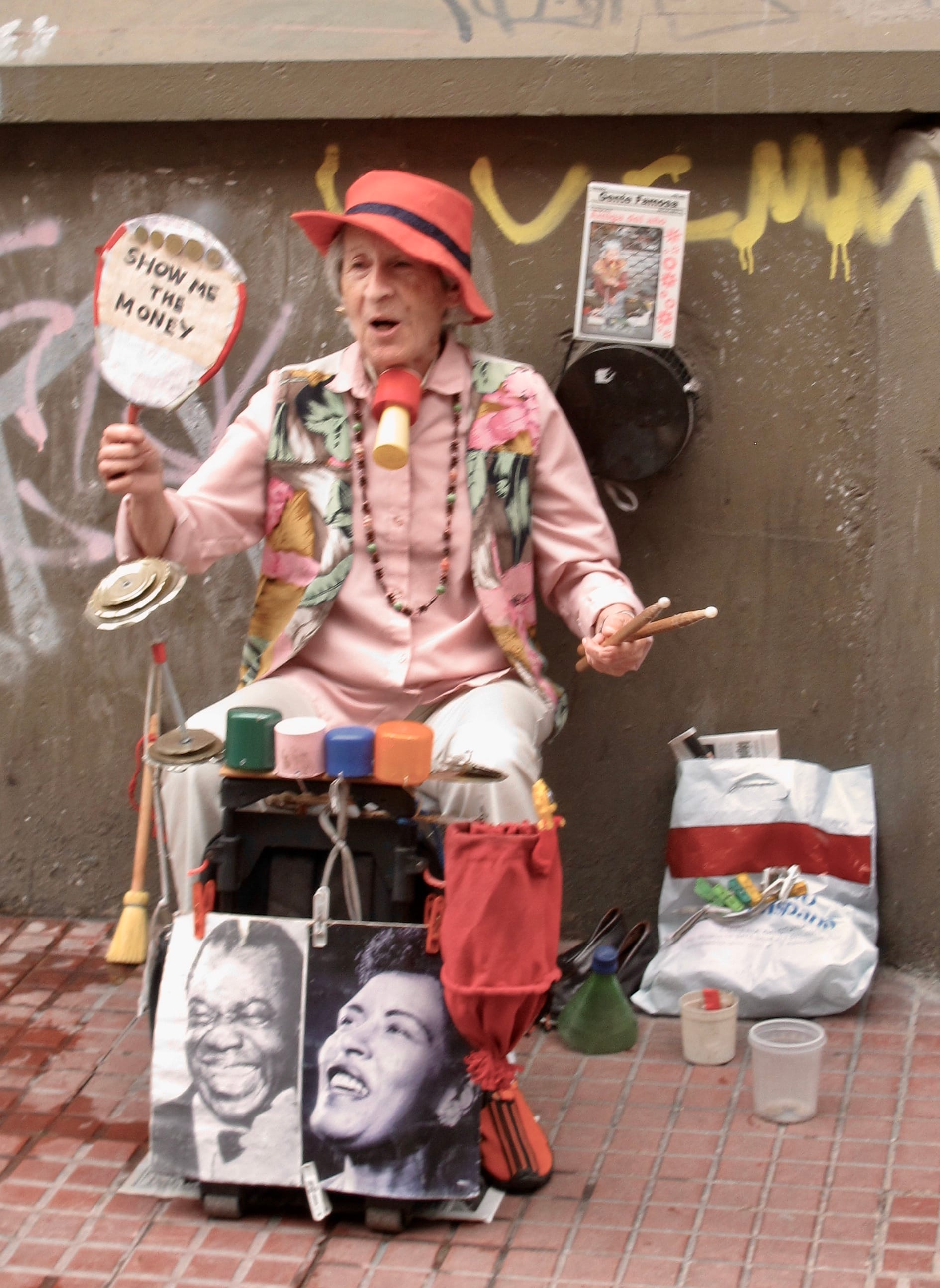
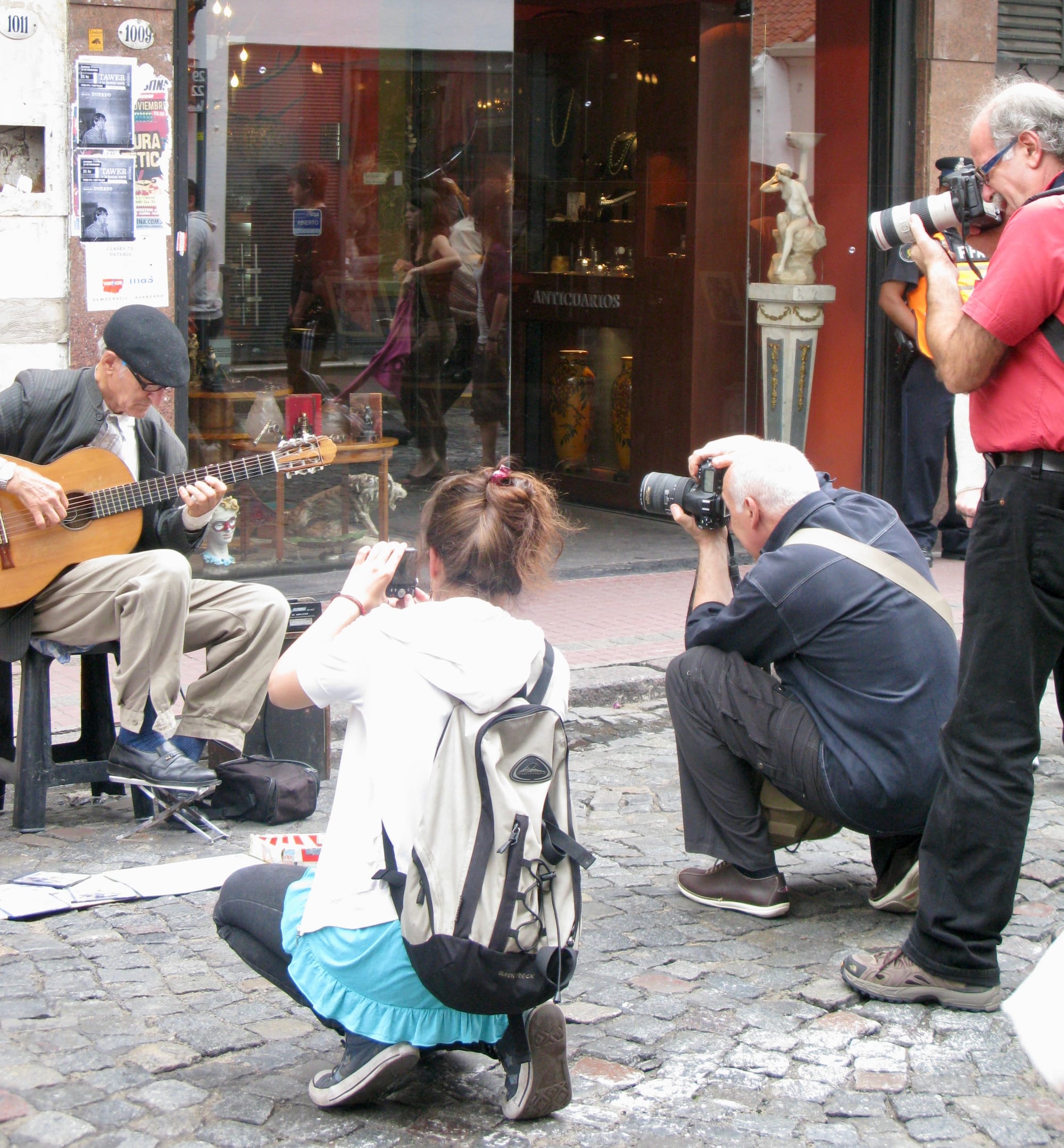
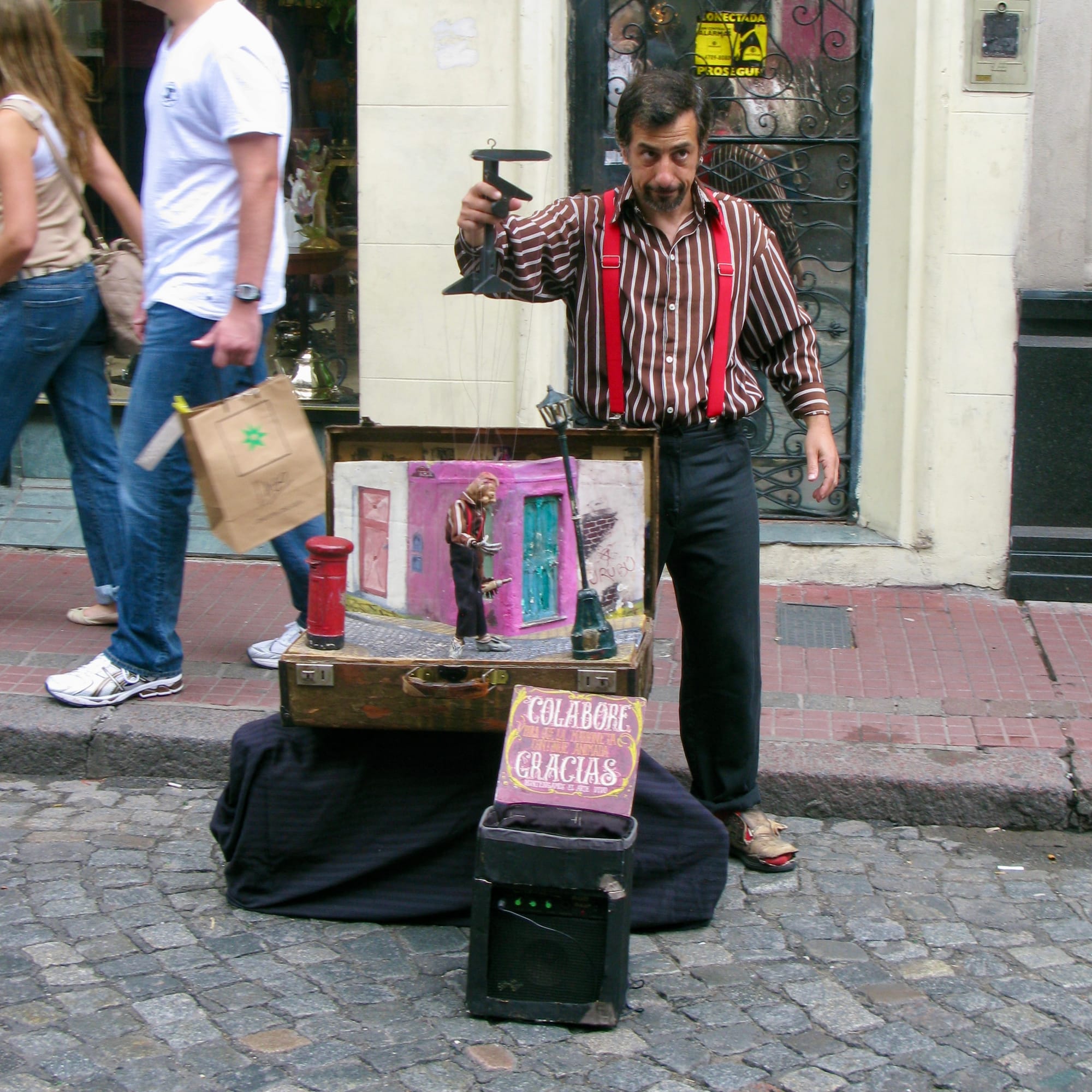
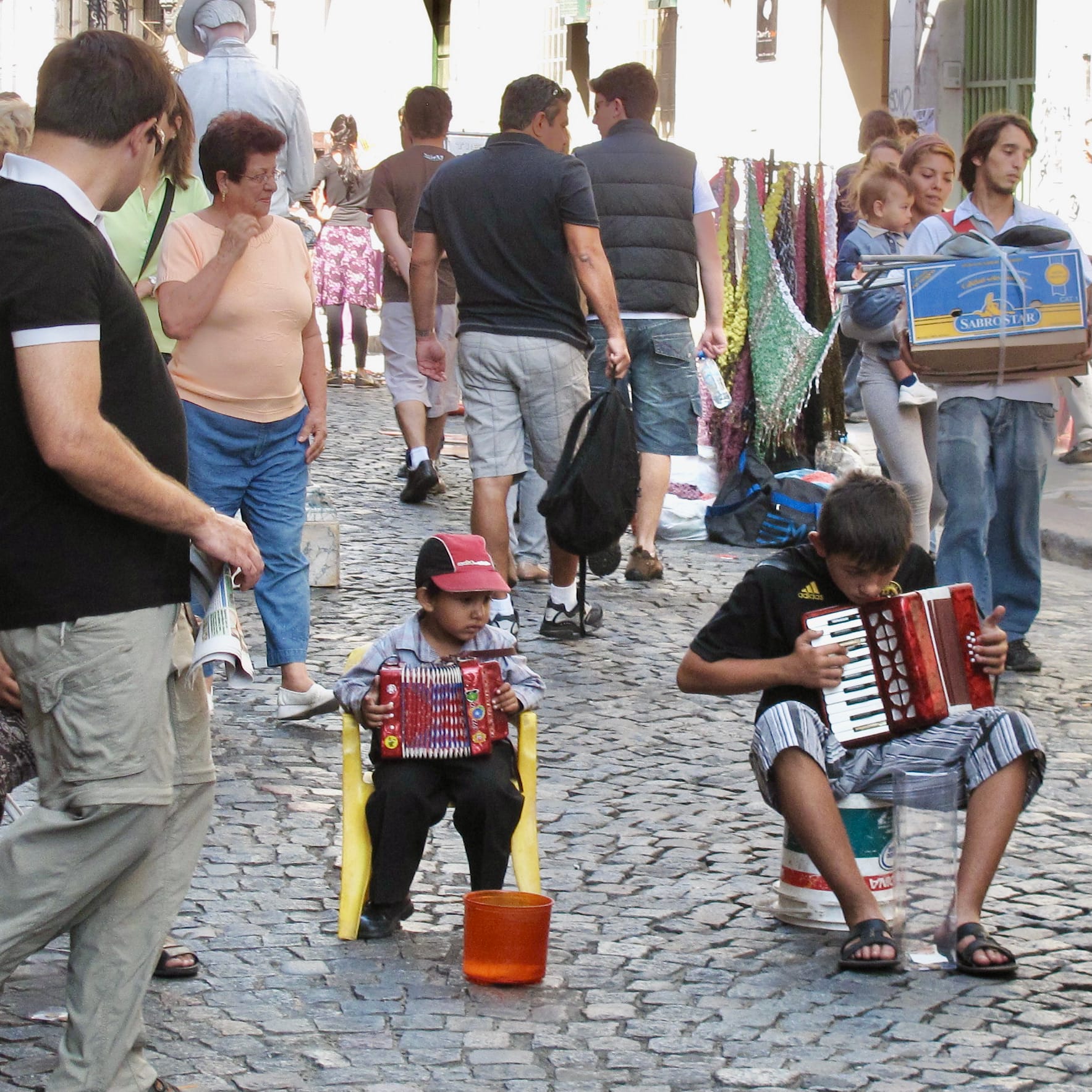
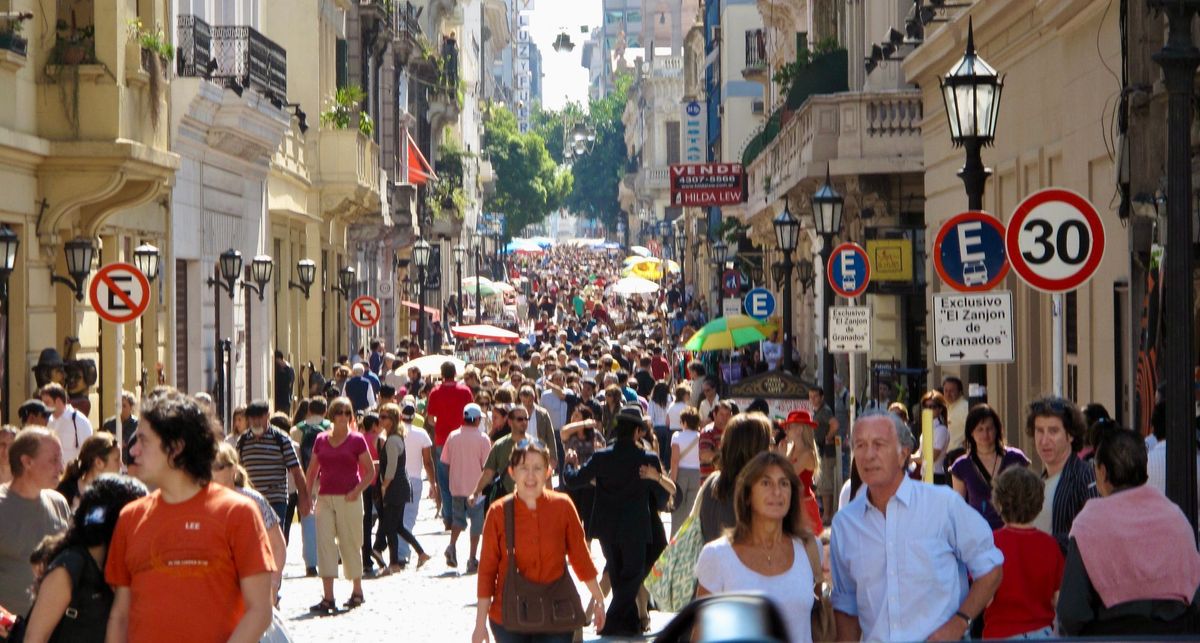
Other Articles that Explore the Social Life of Markets and Squares
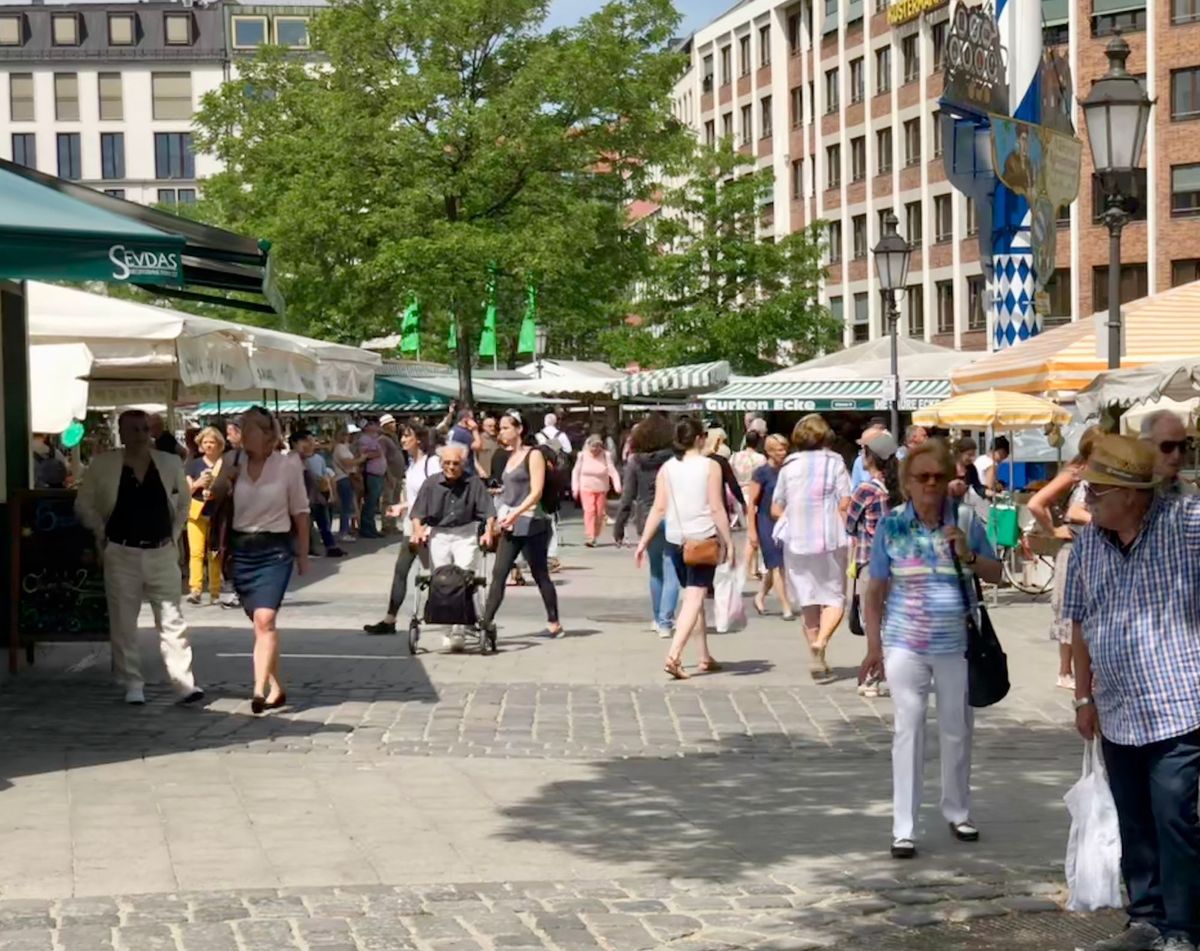


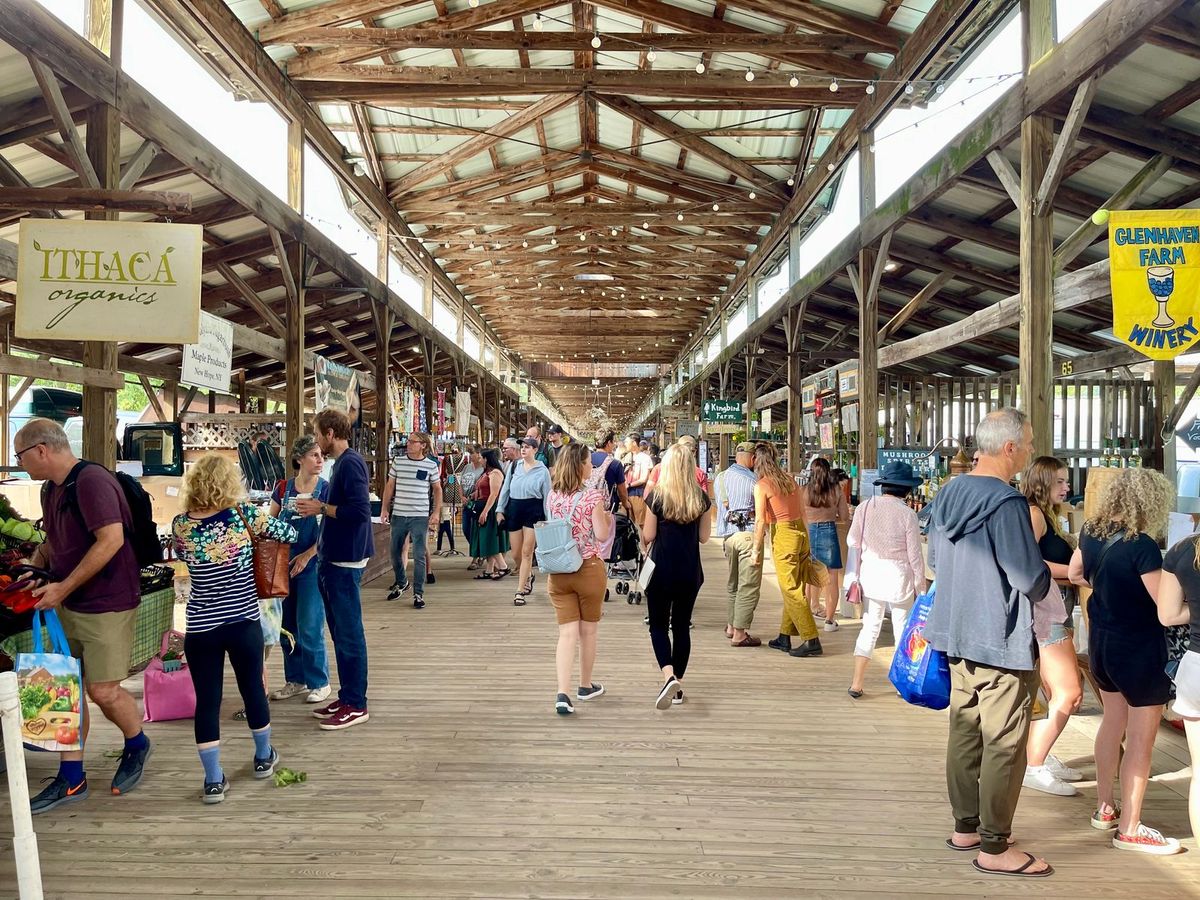
Resource Guide
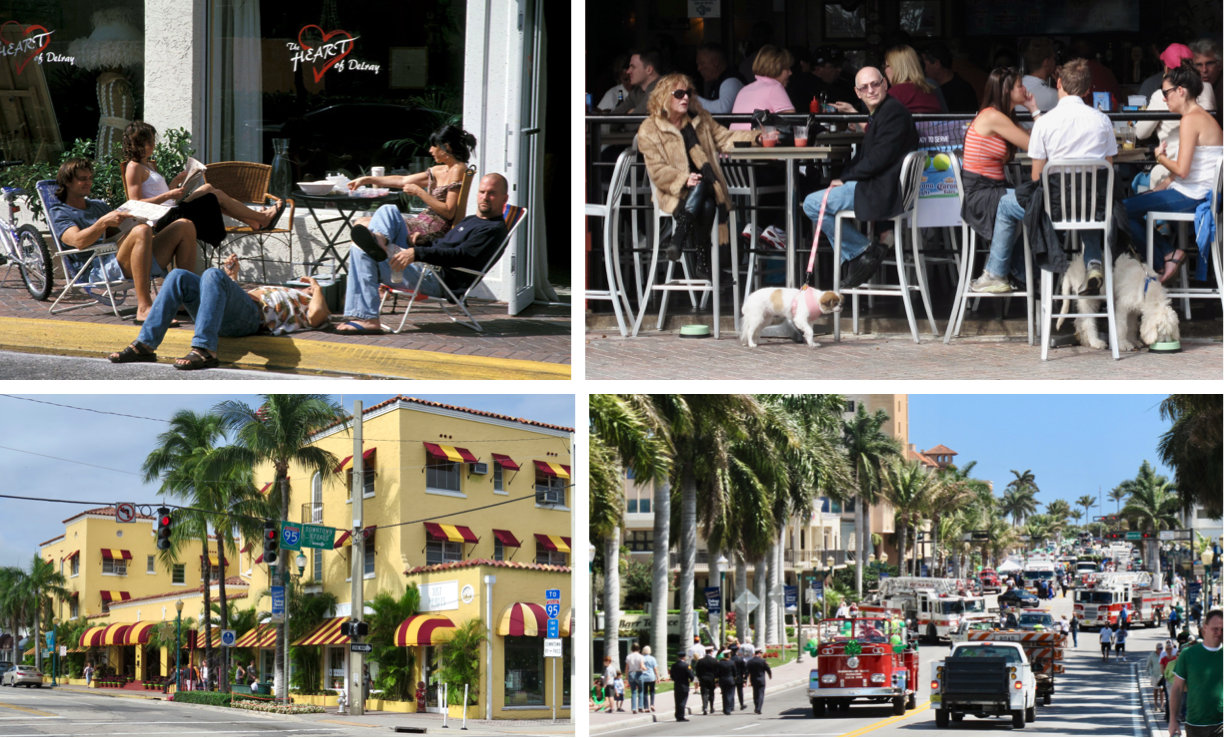
If you are interested in collaborating (articles, presentations, exhibits, projects, and more) or supporting the cause contact us.


